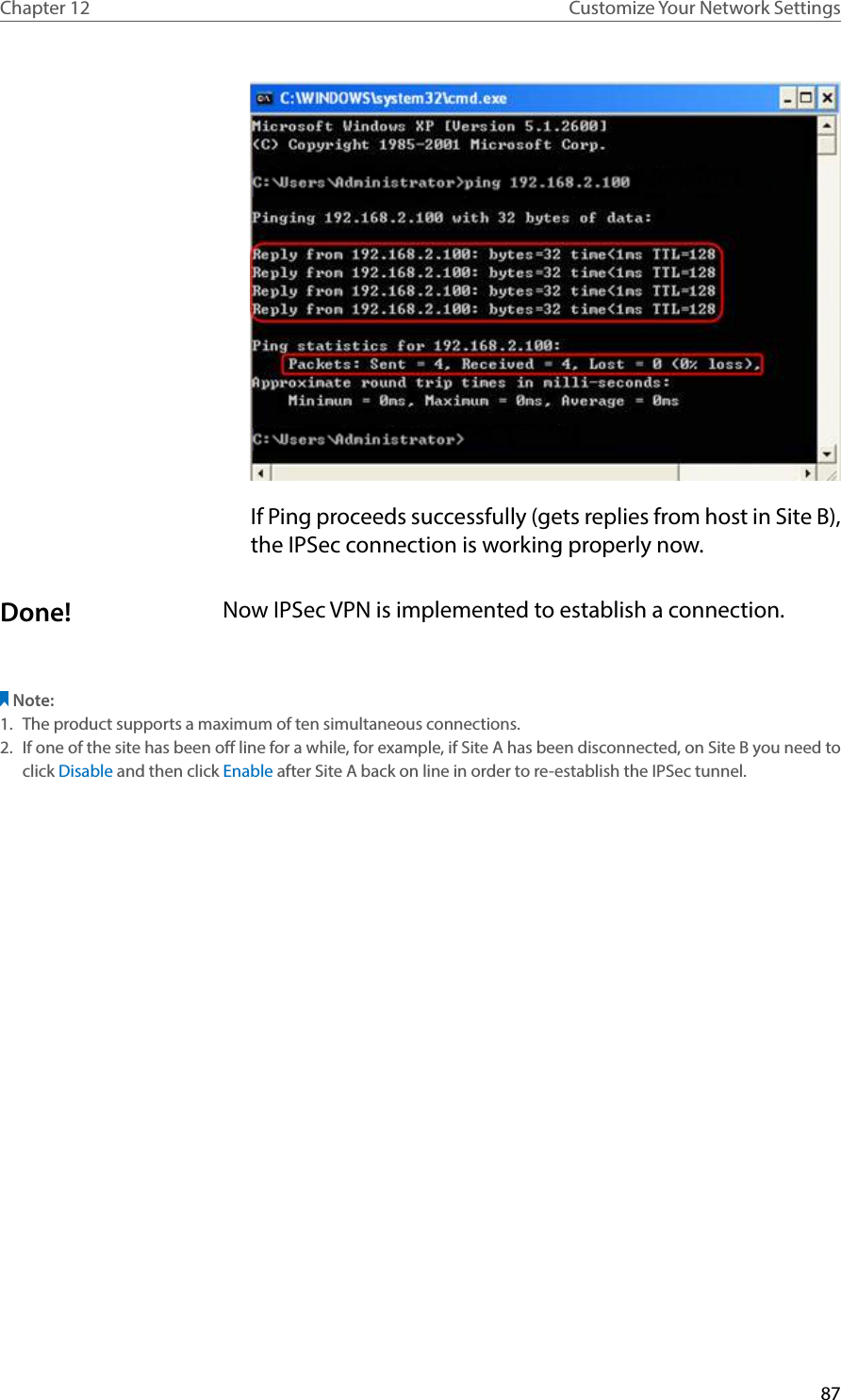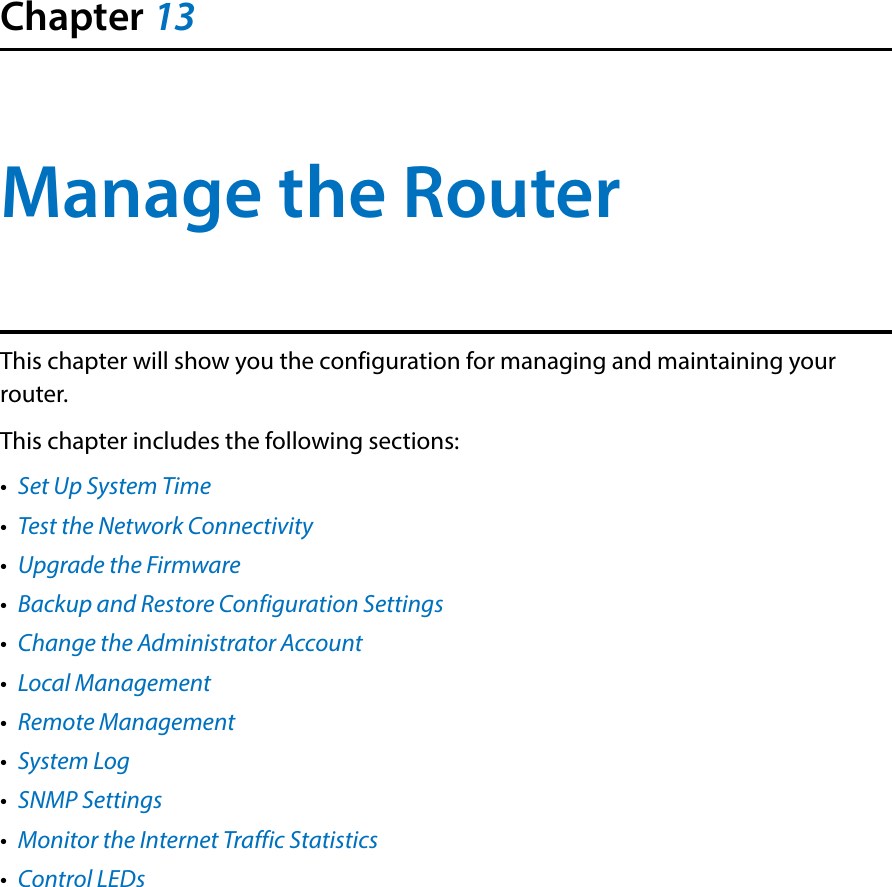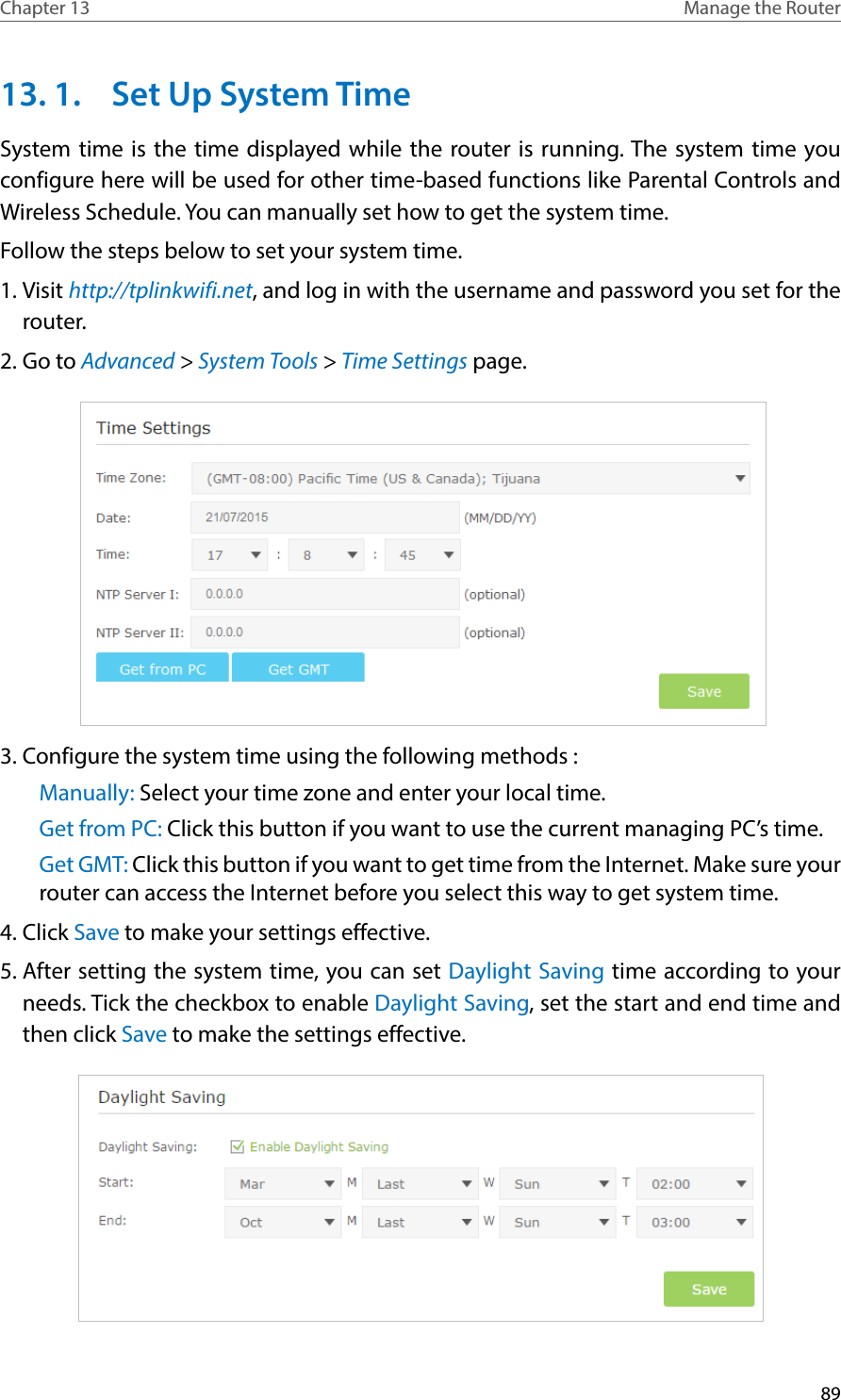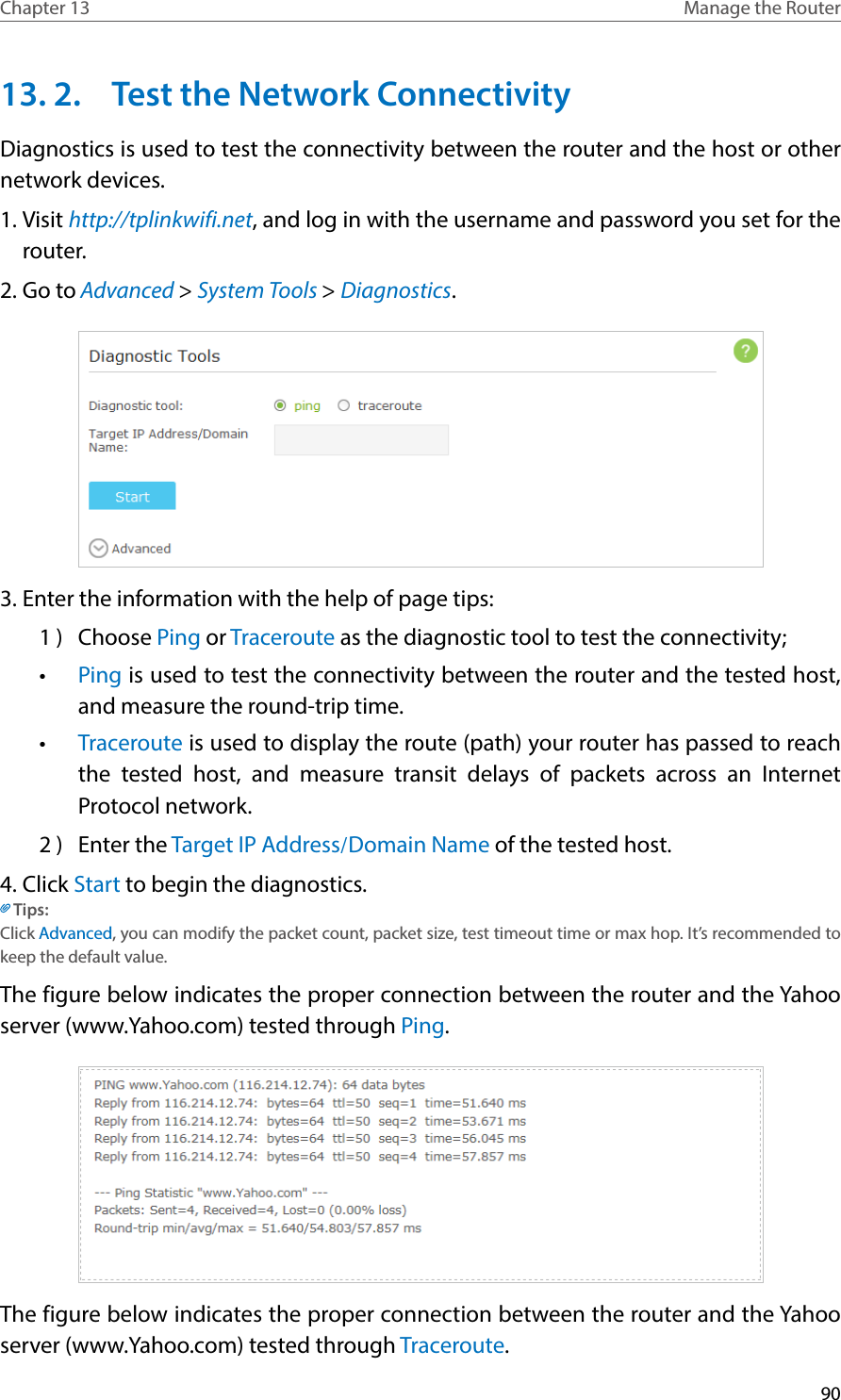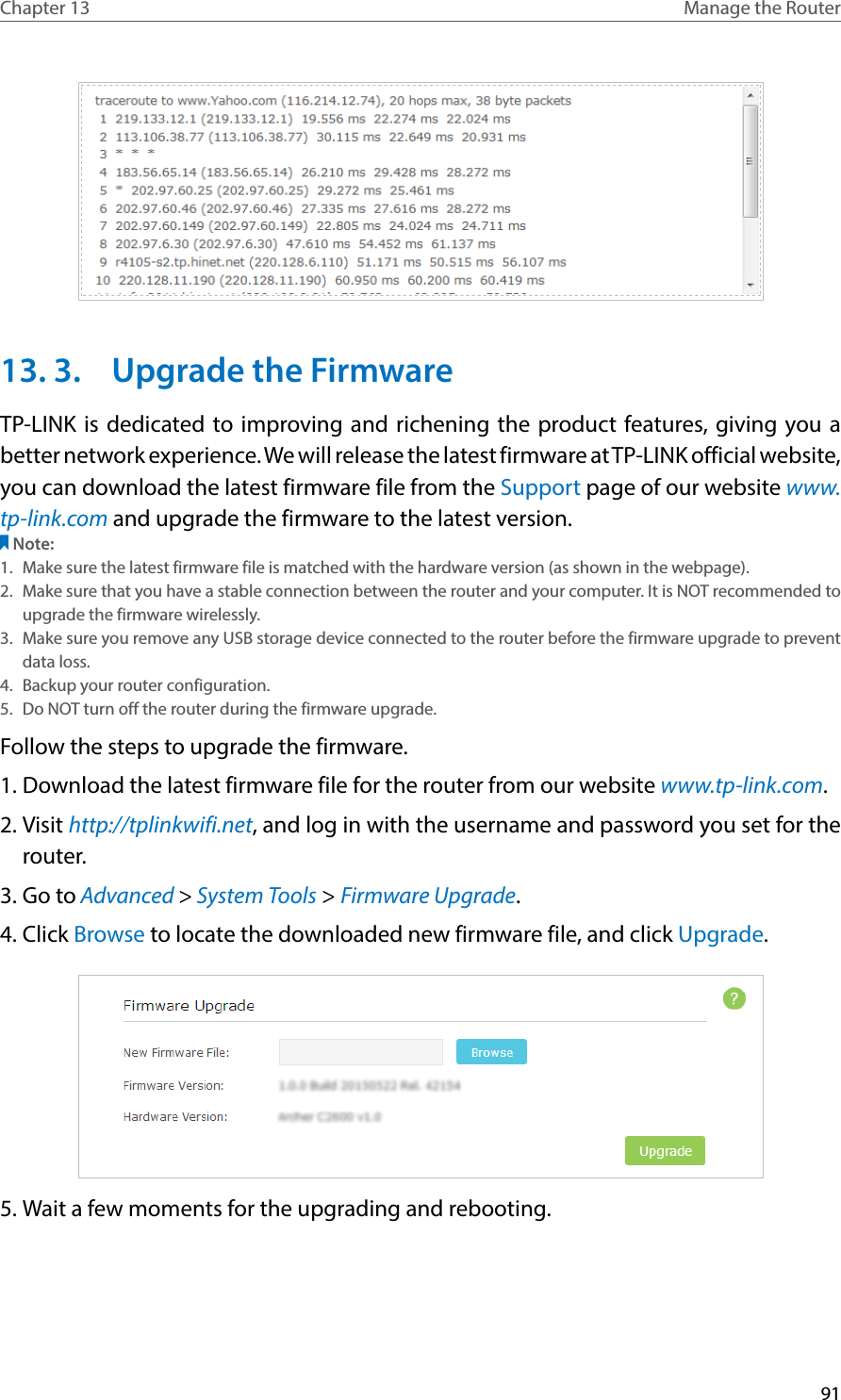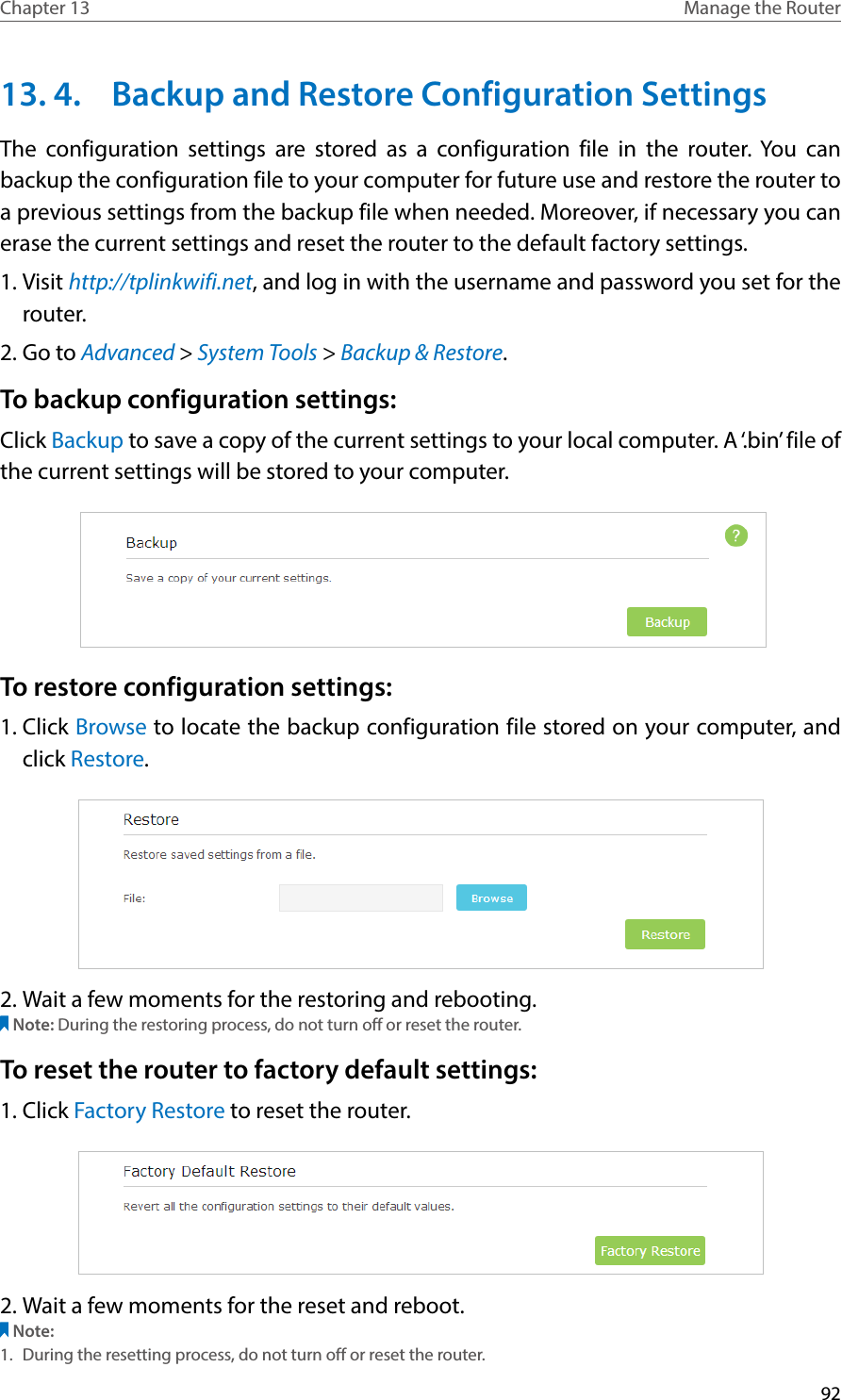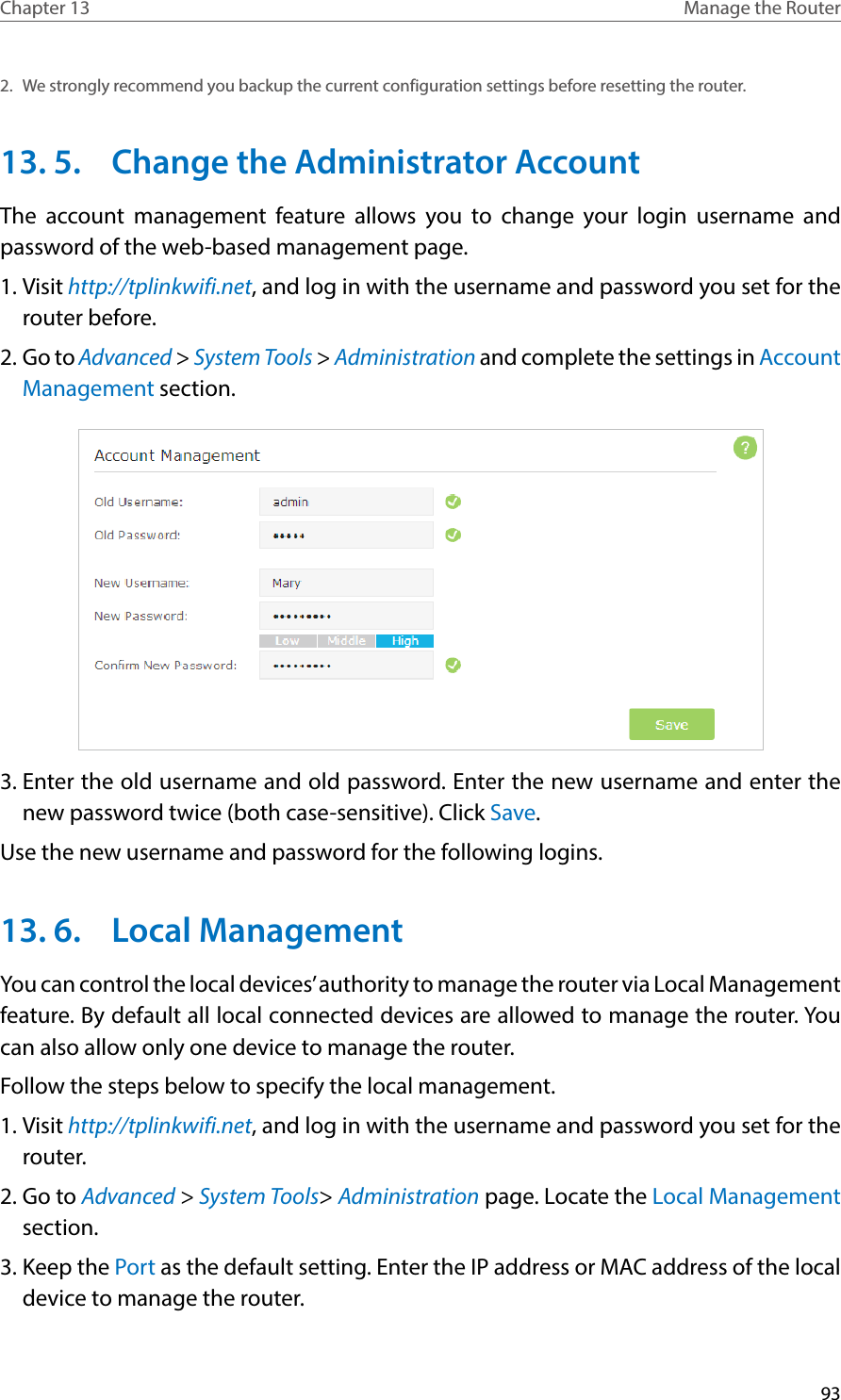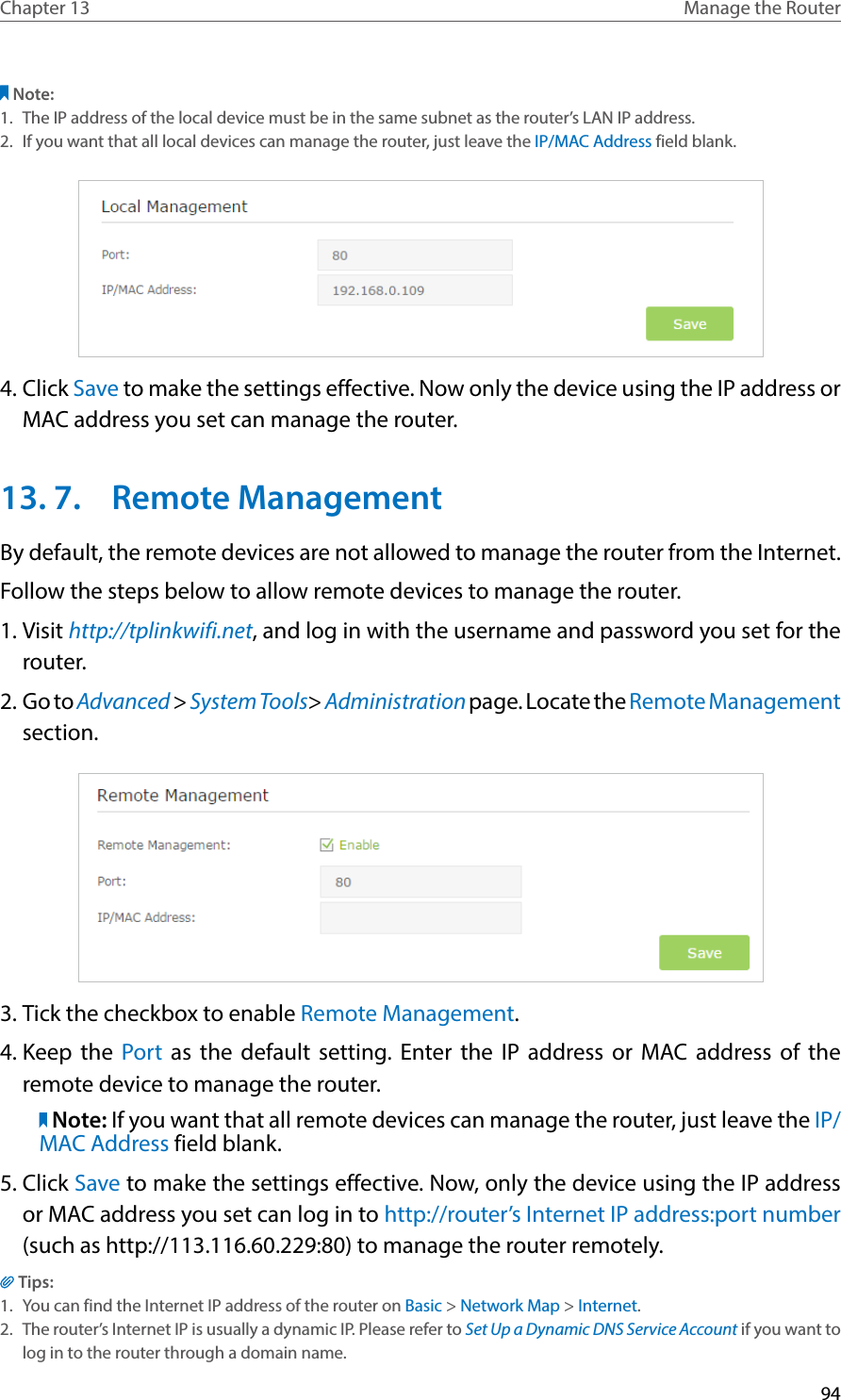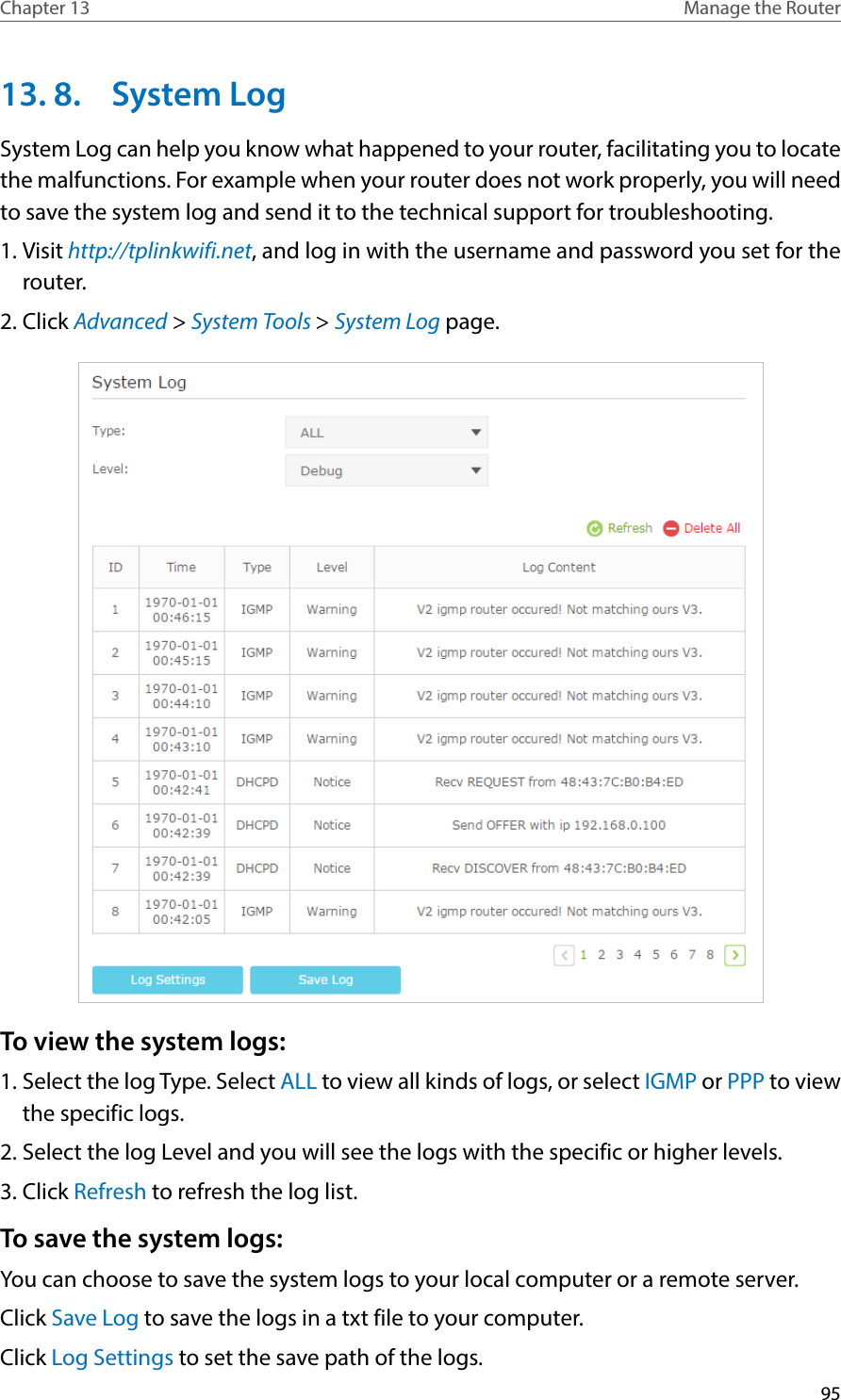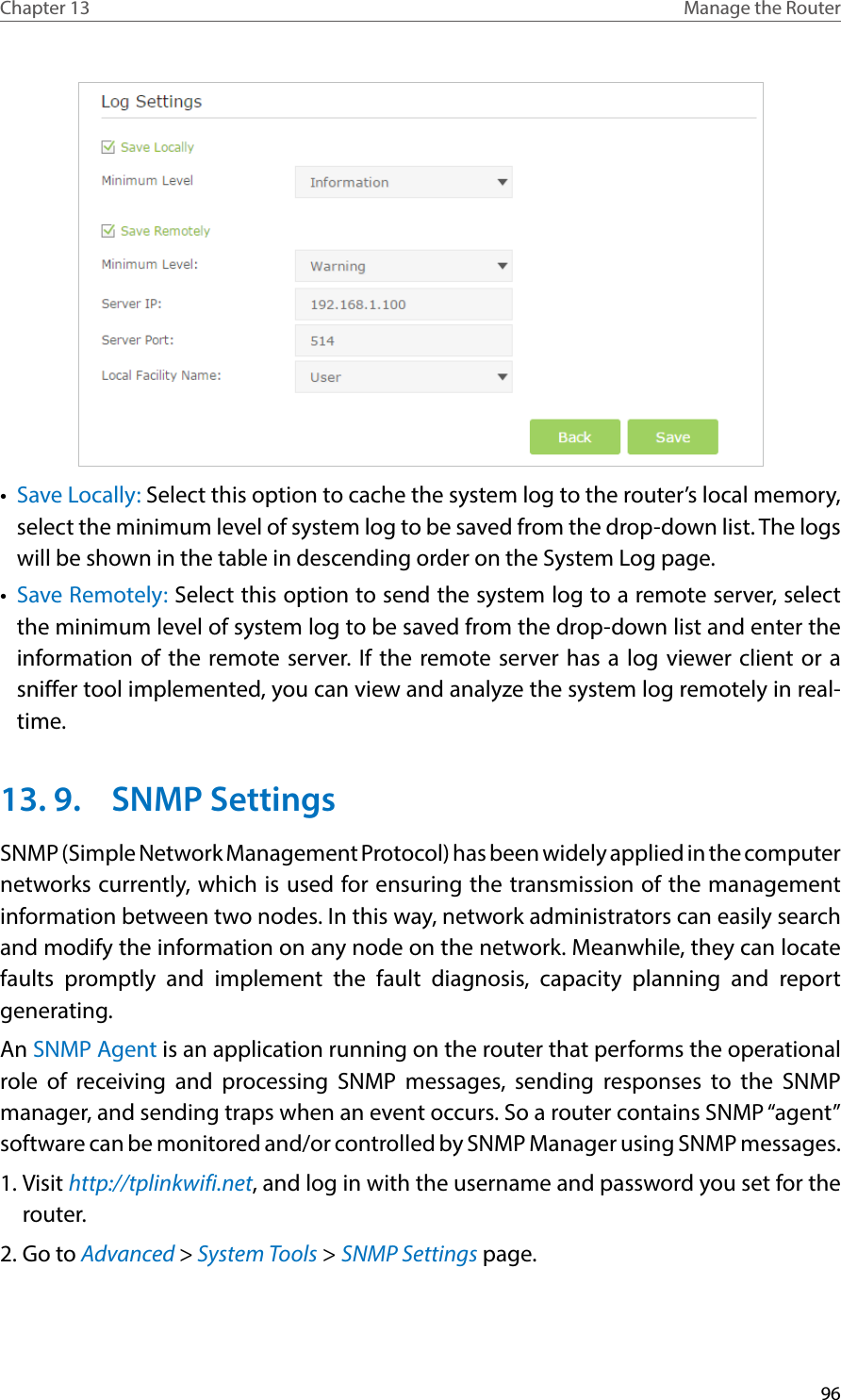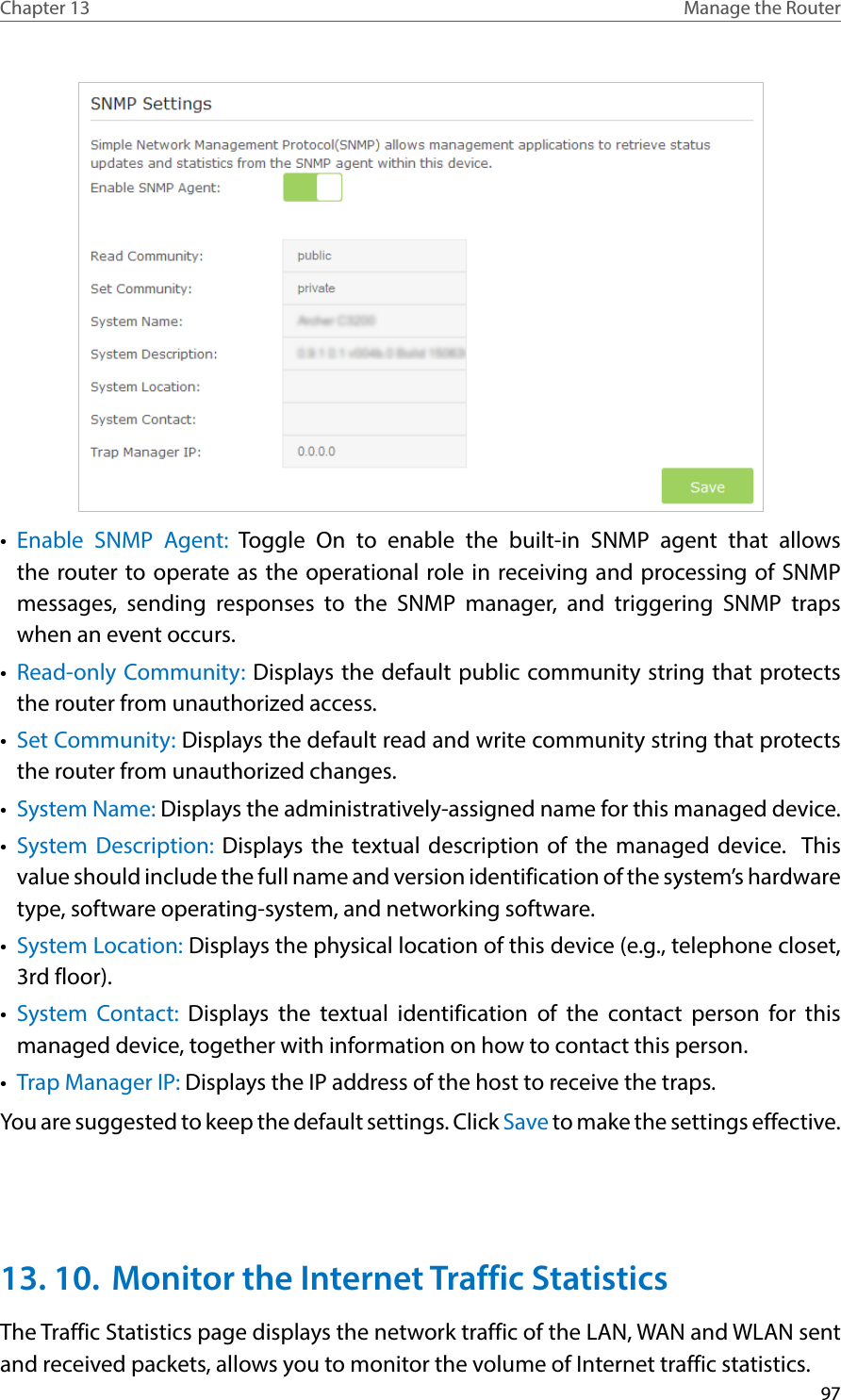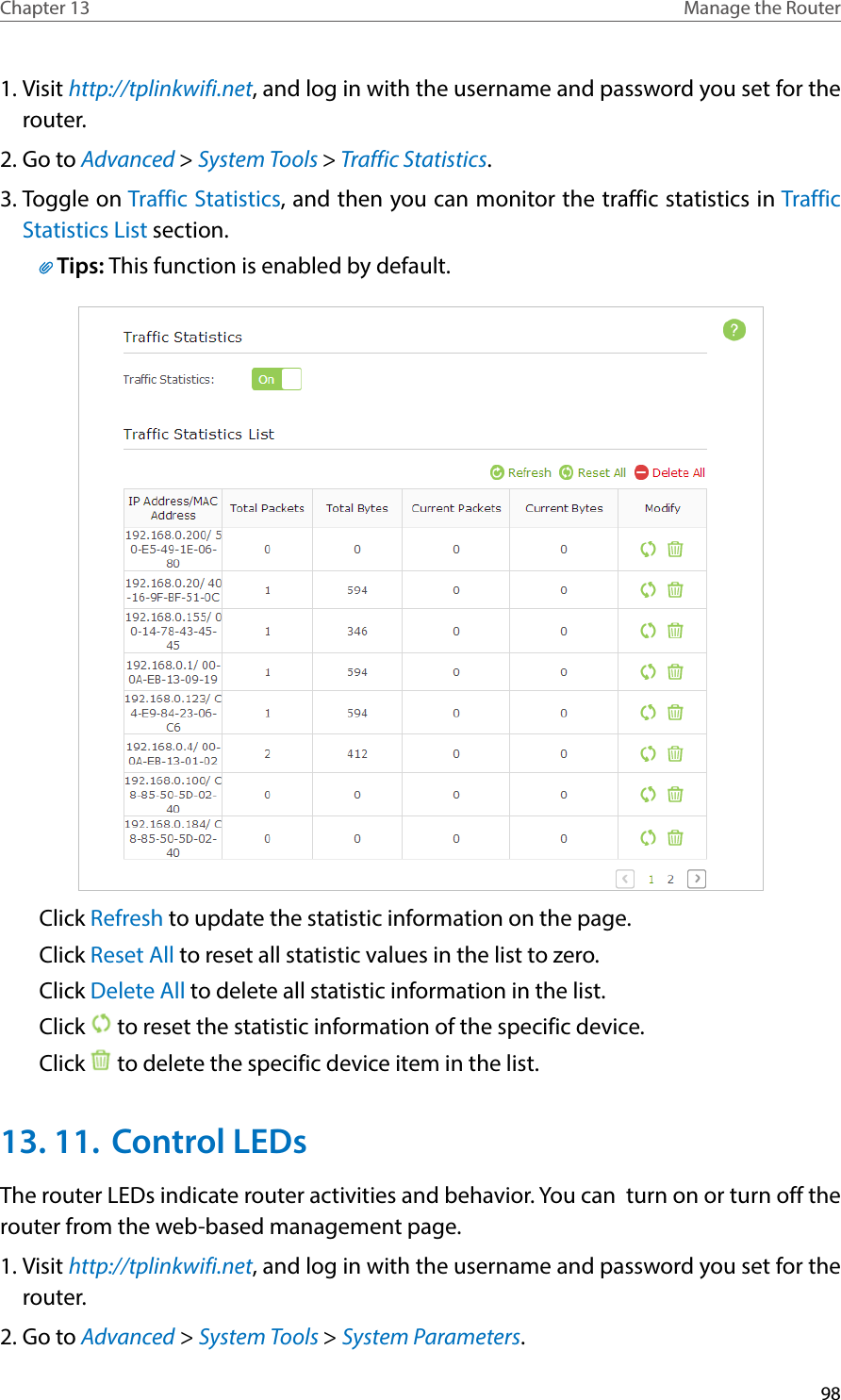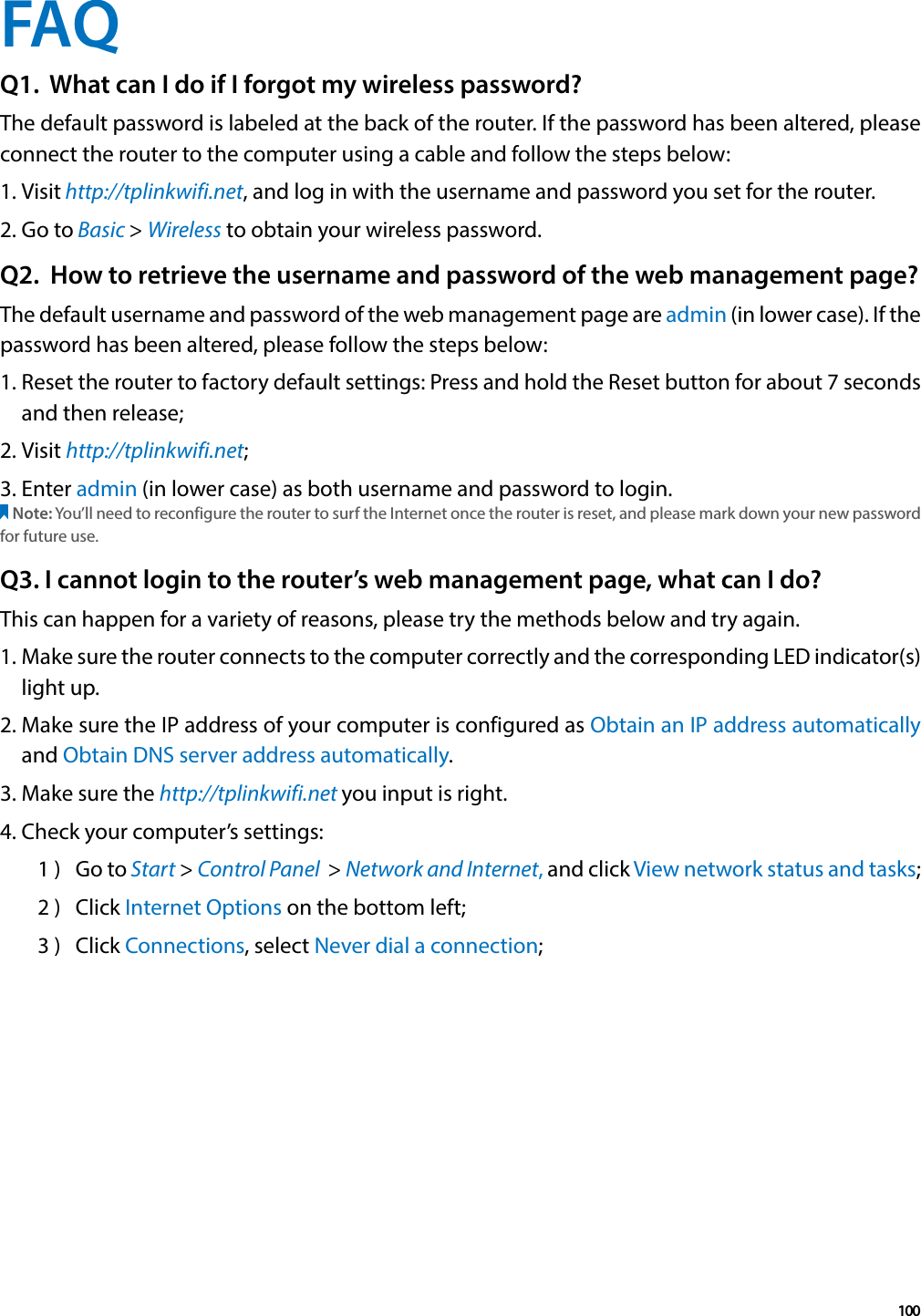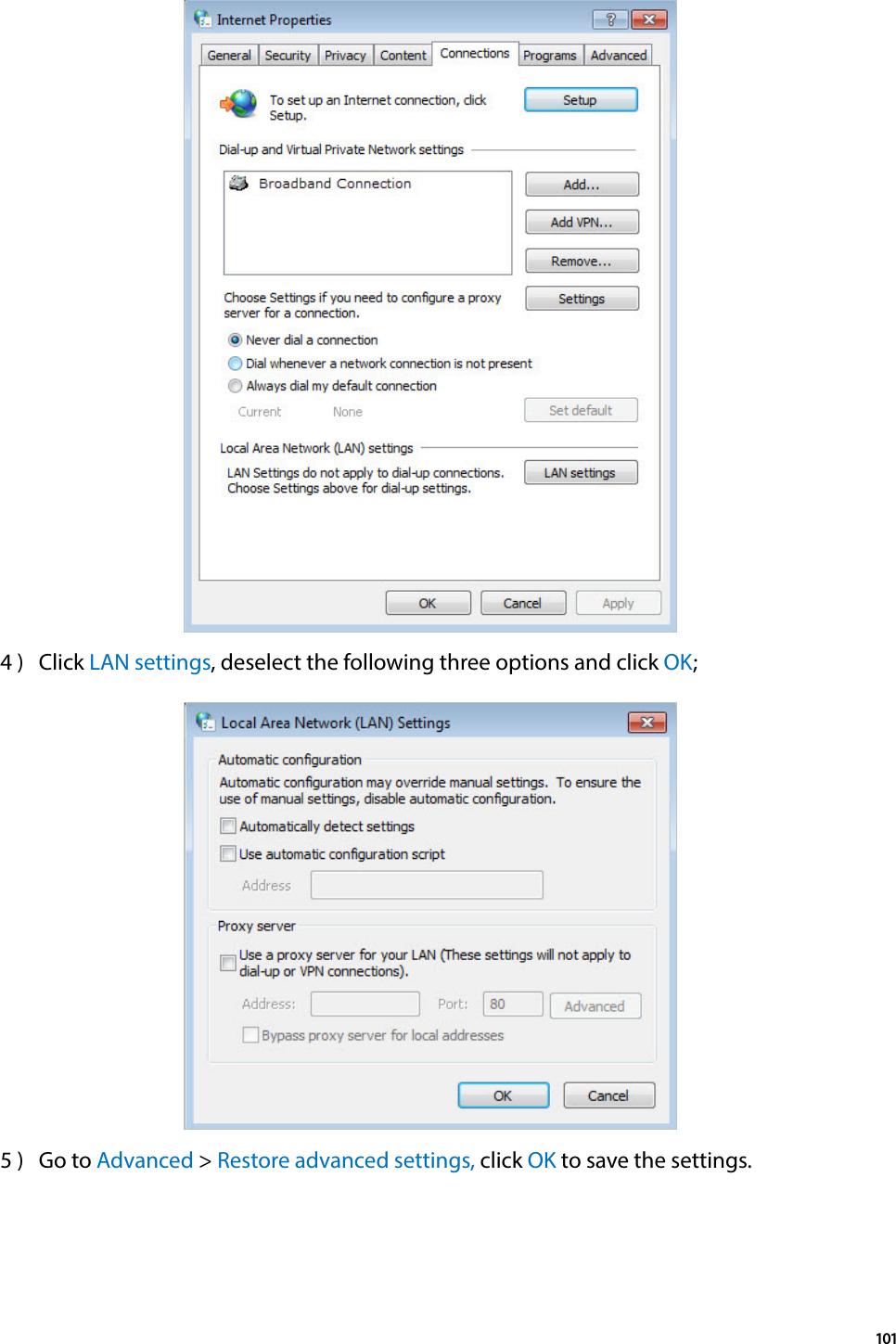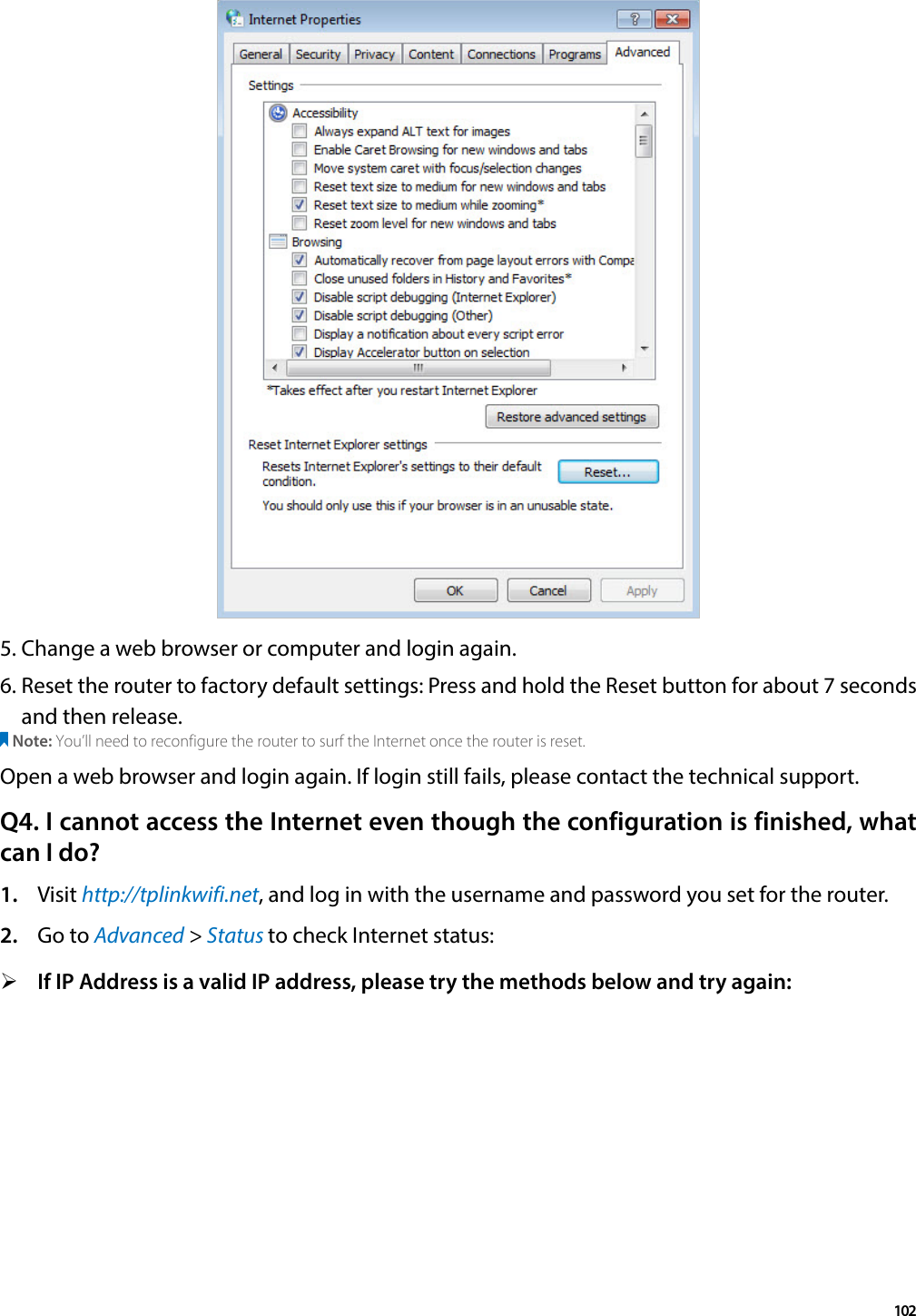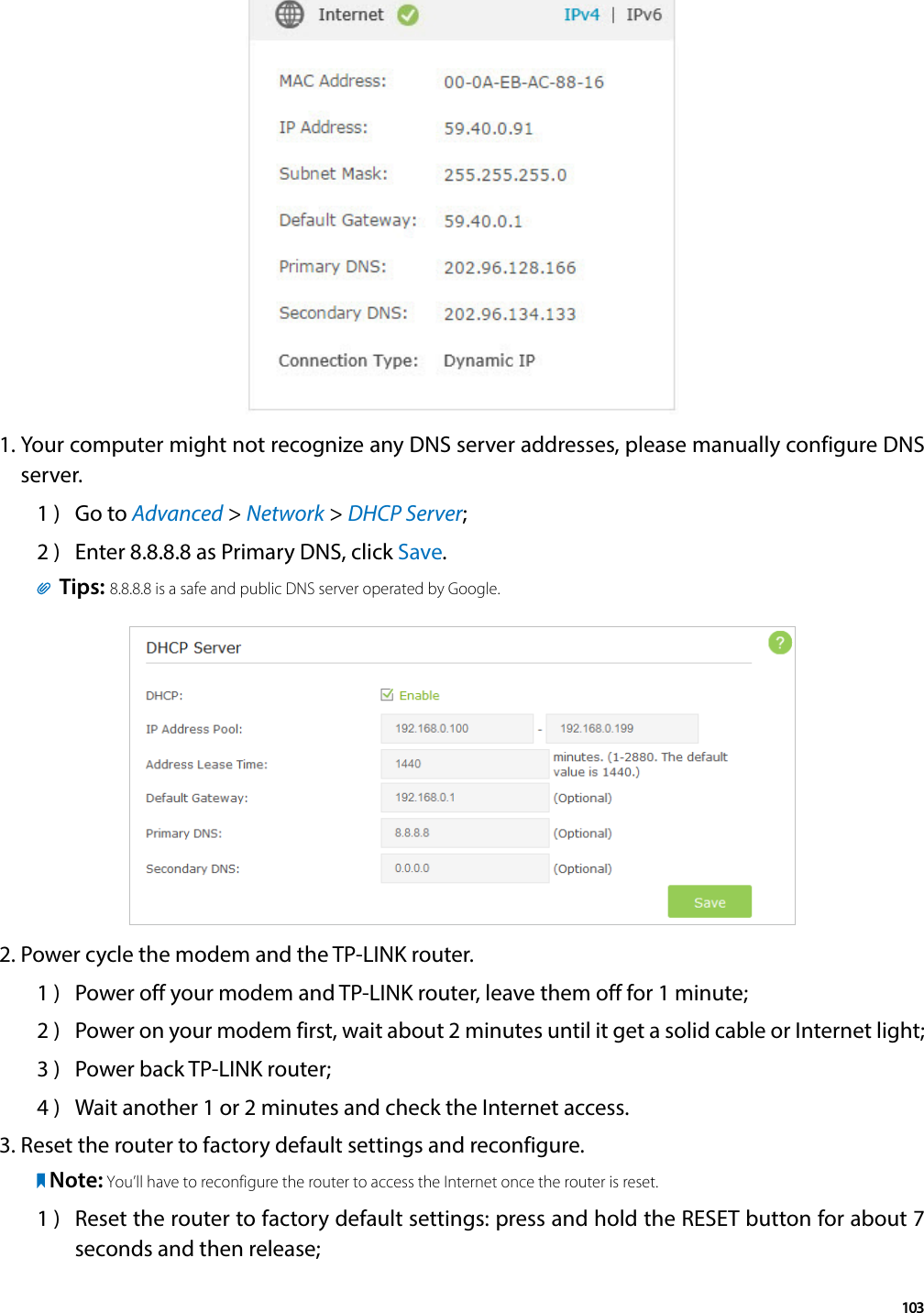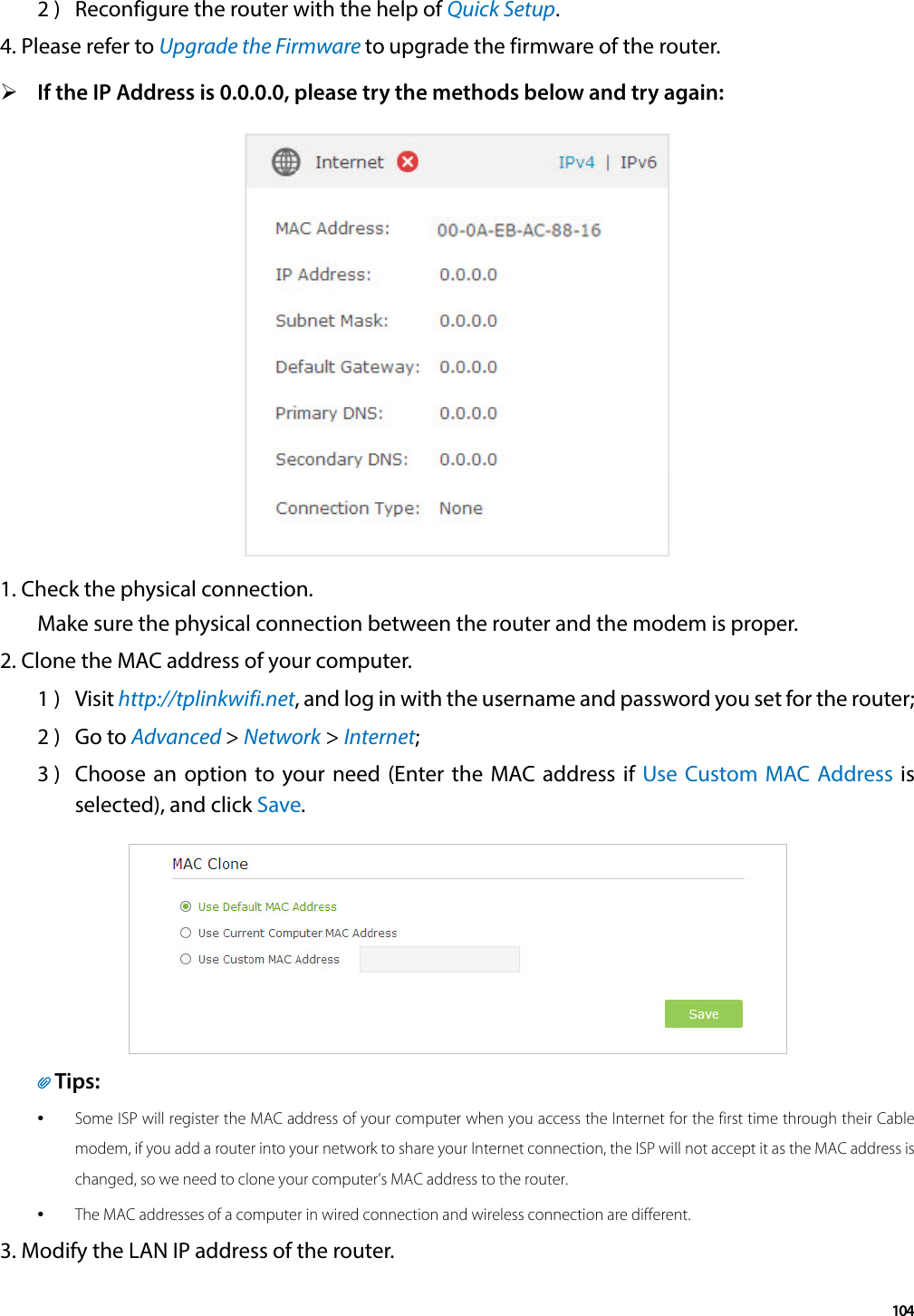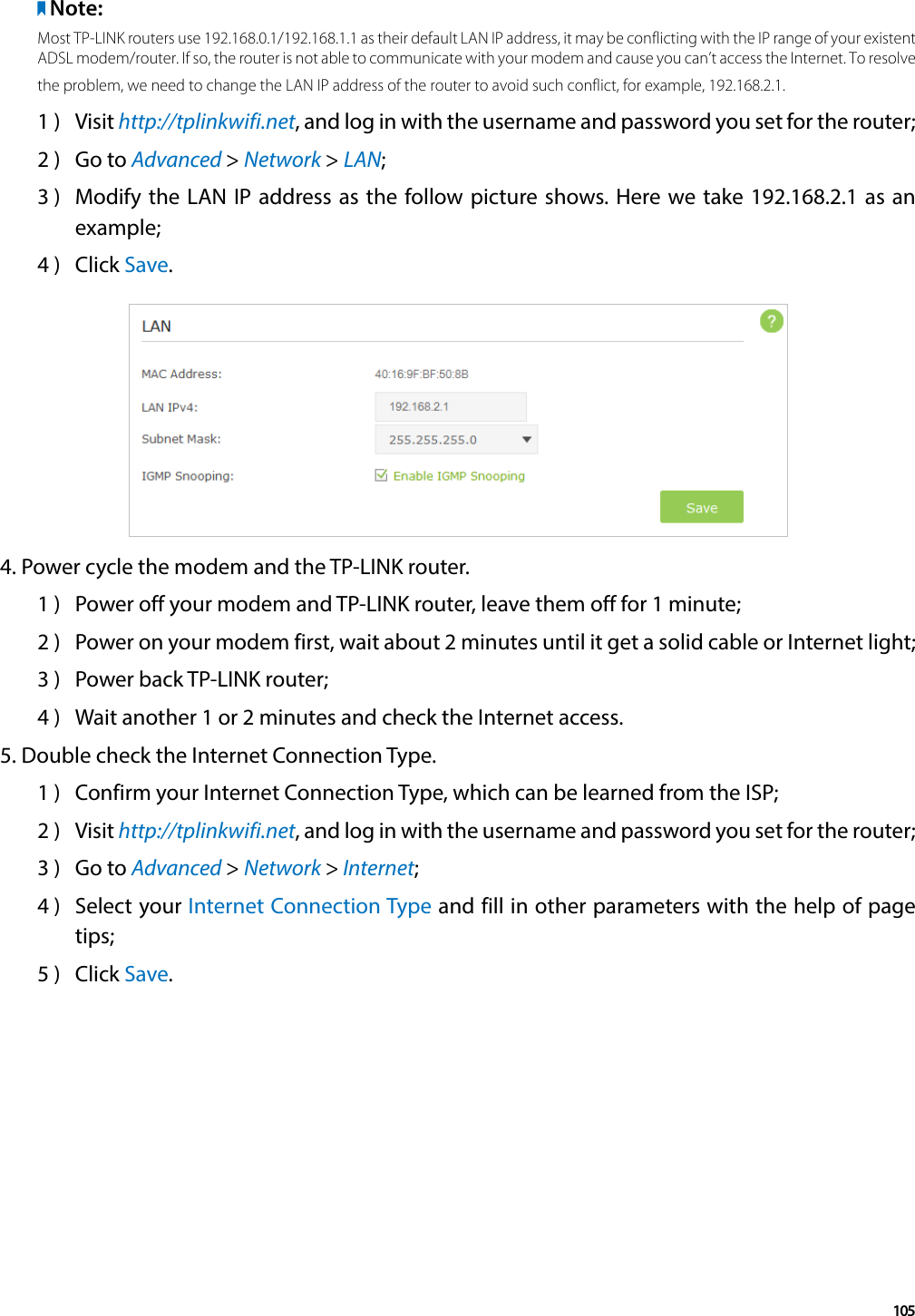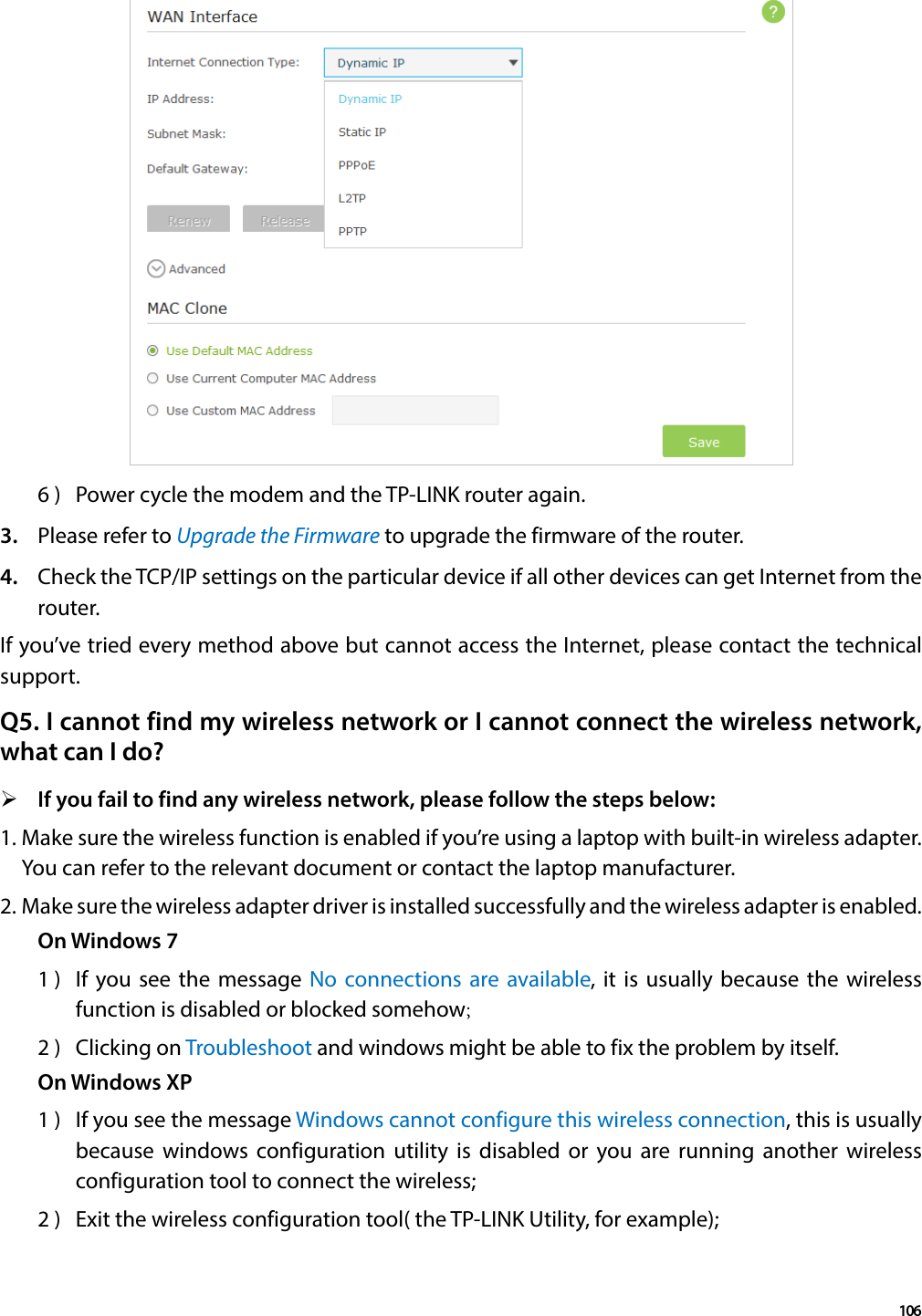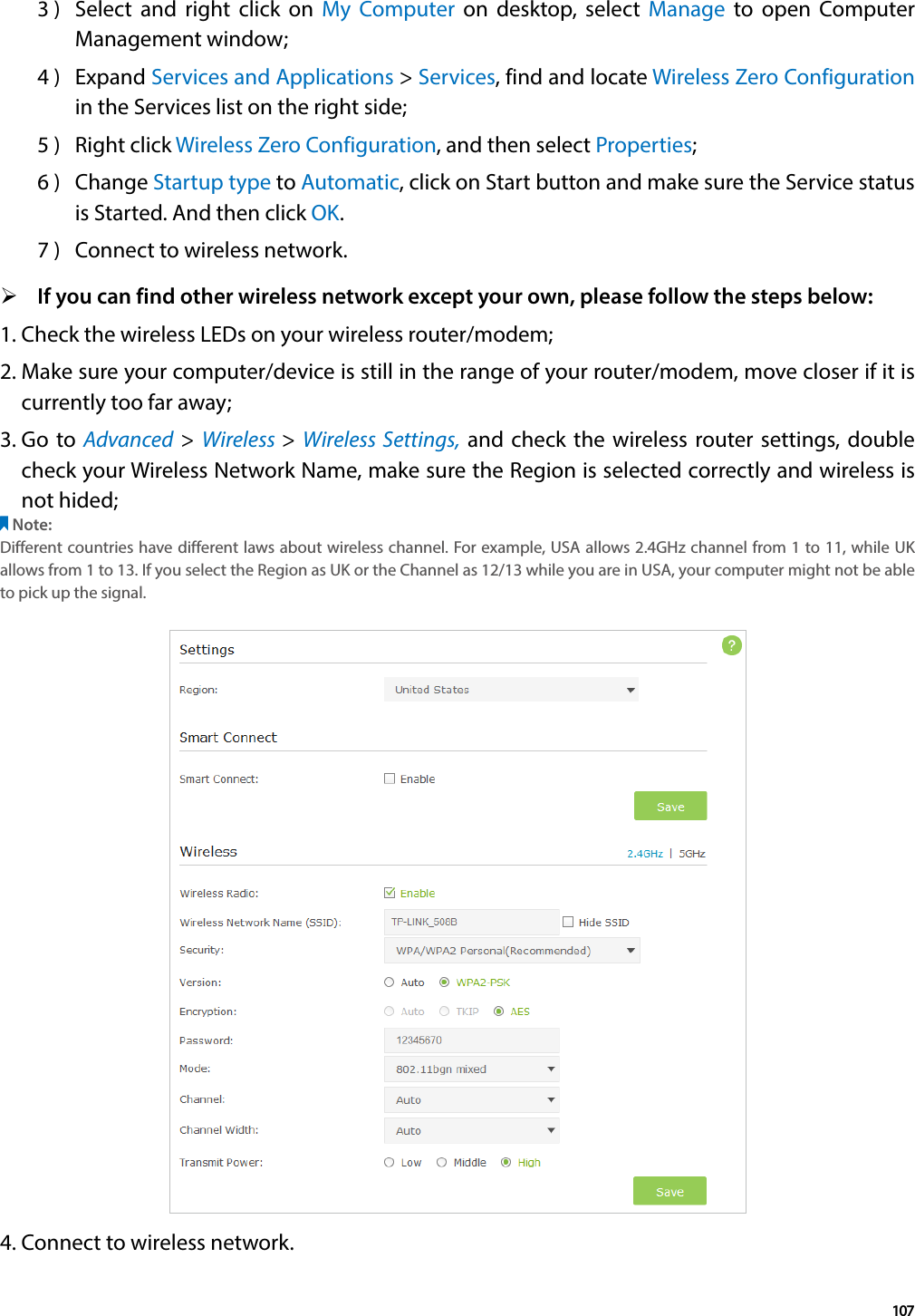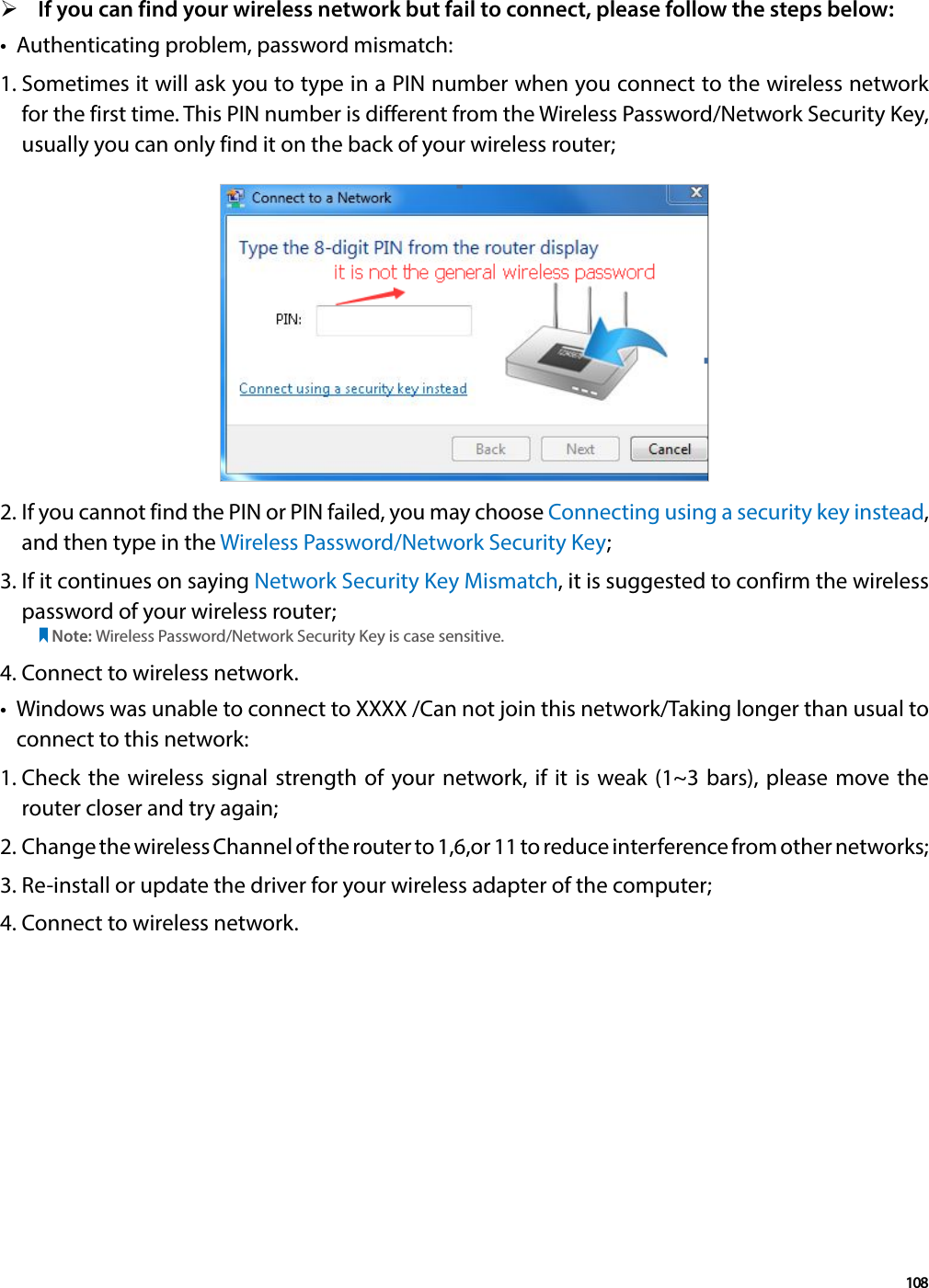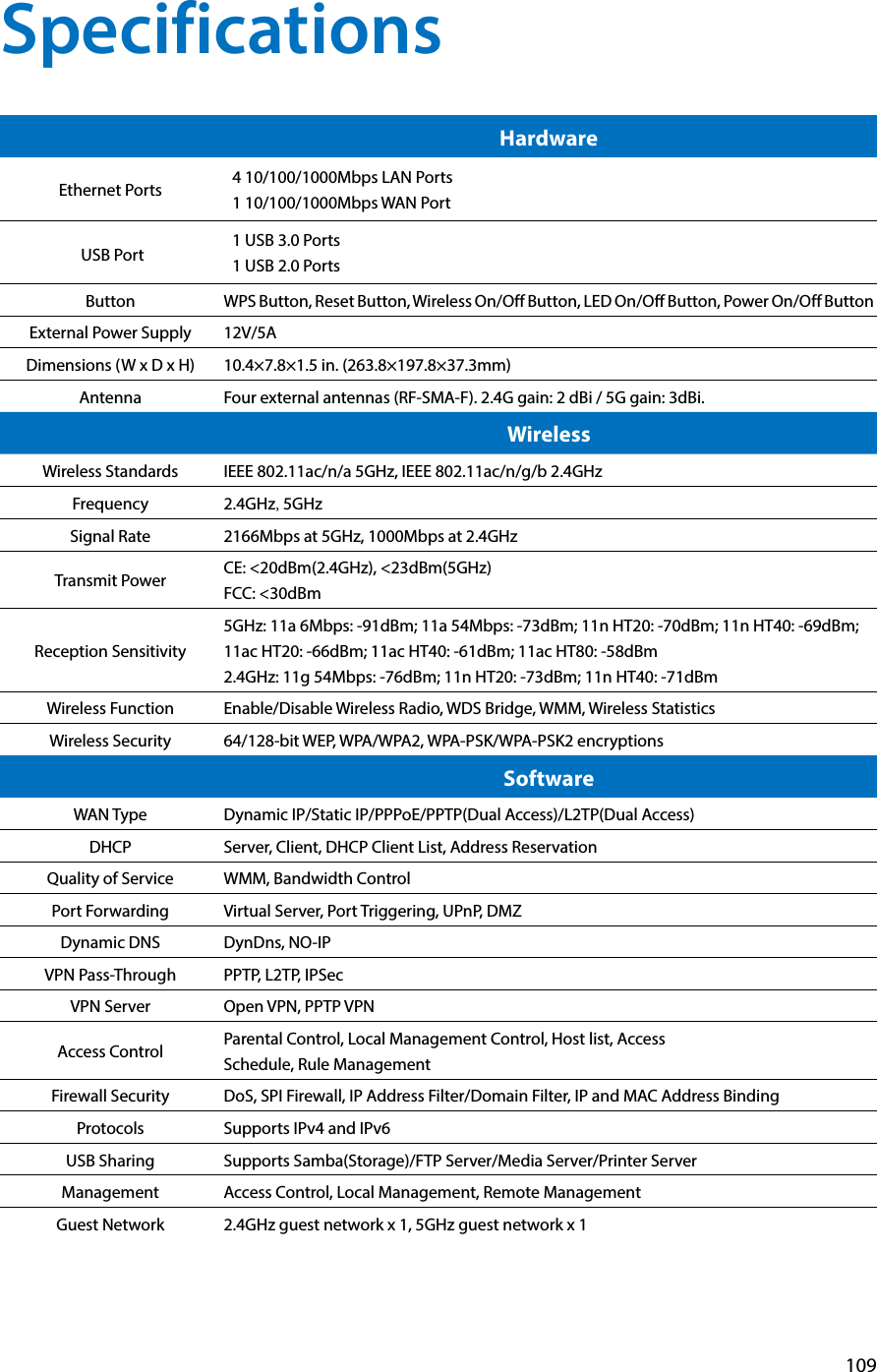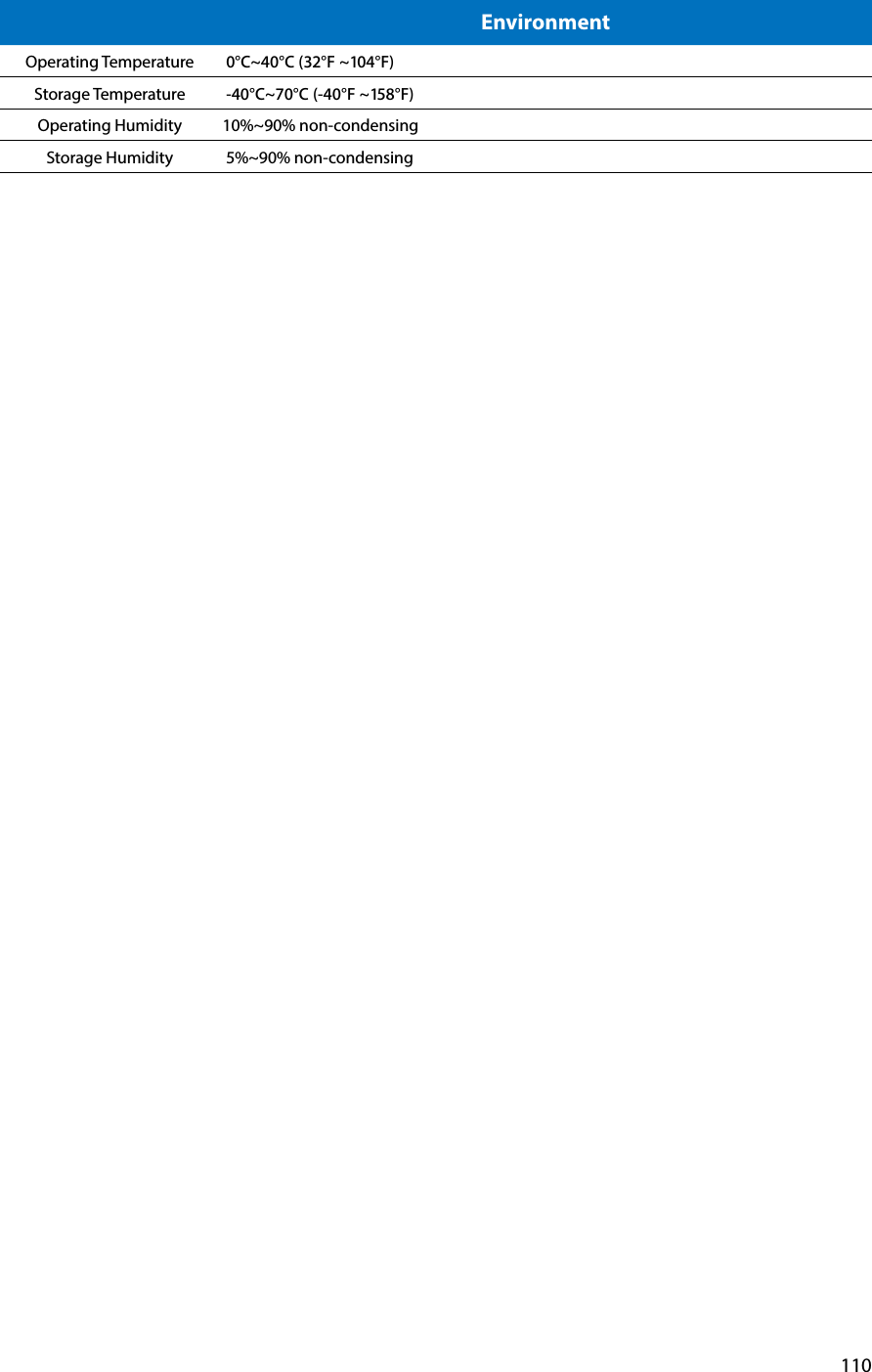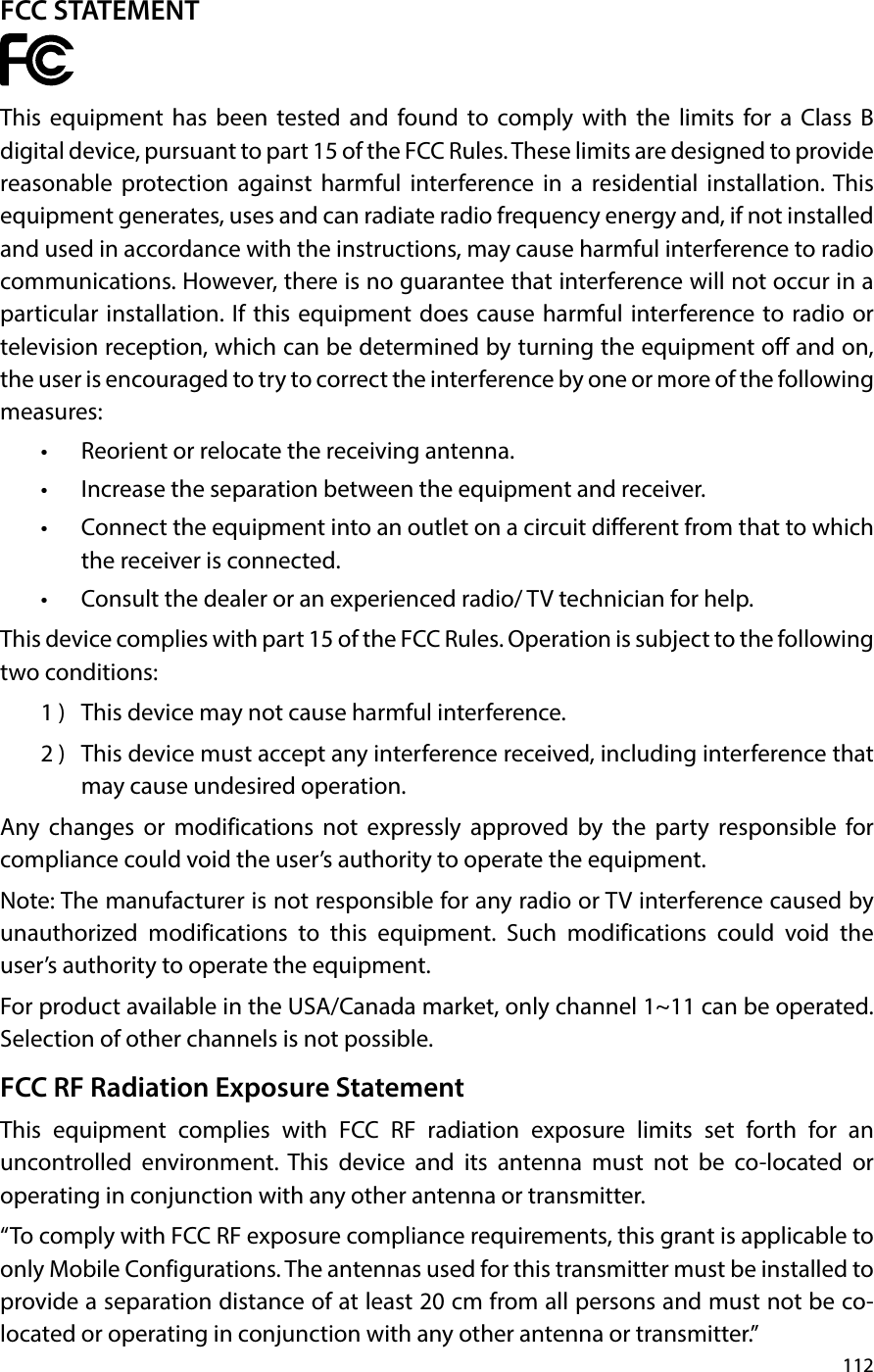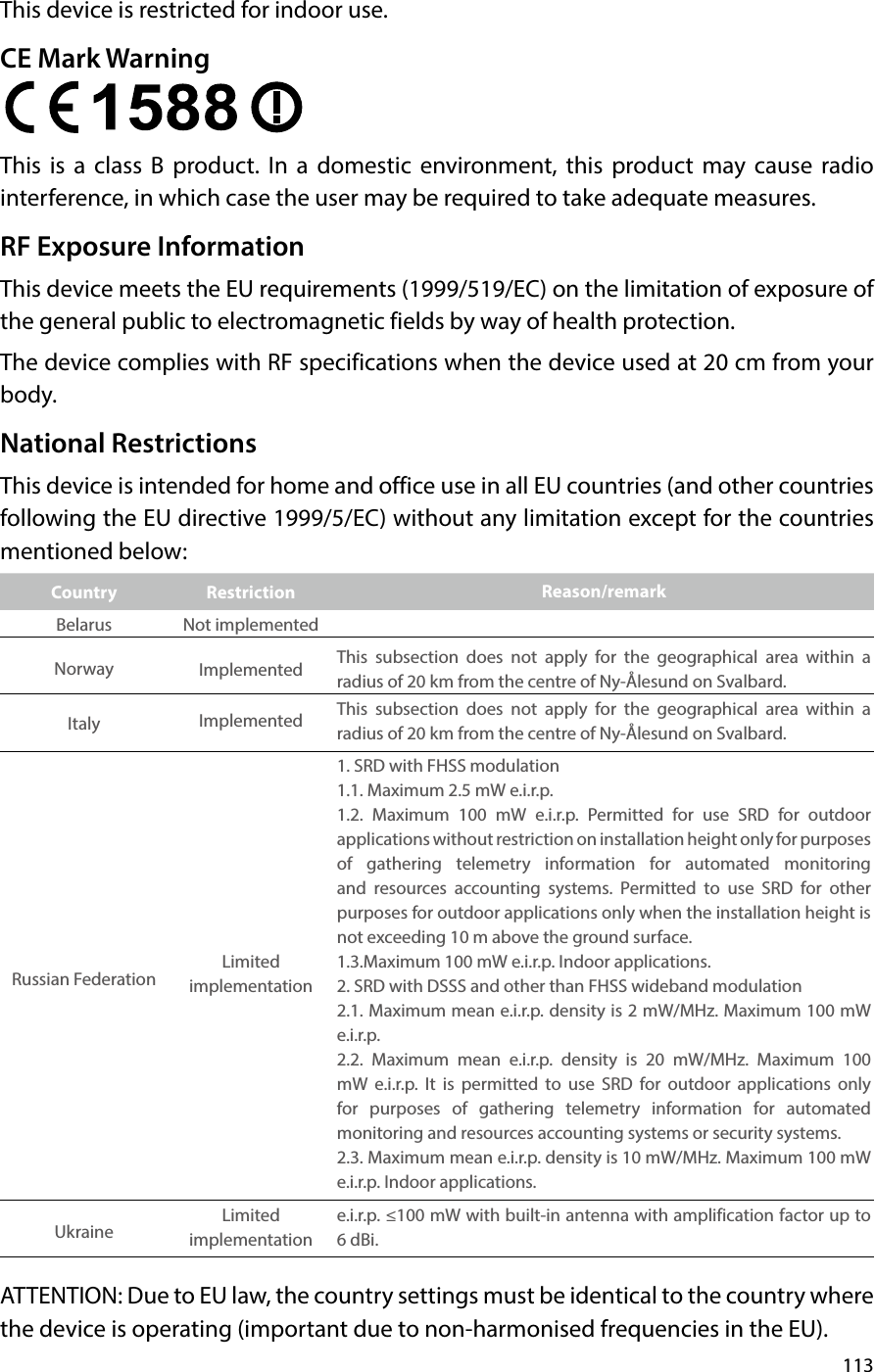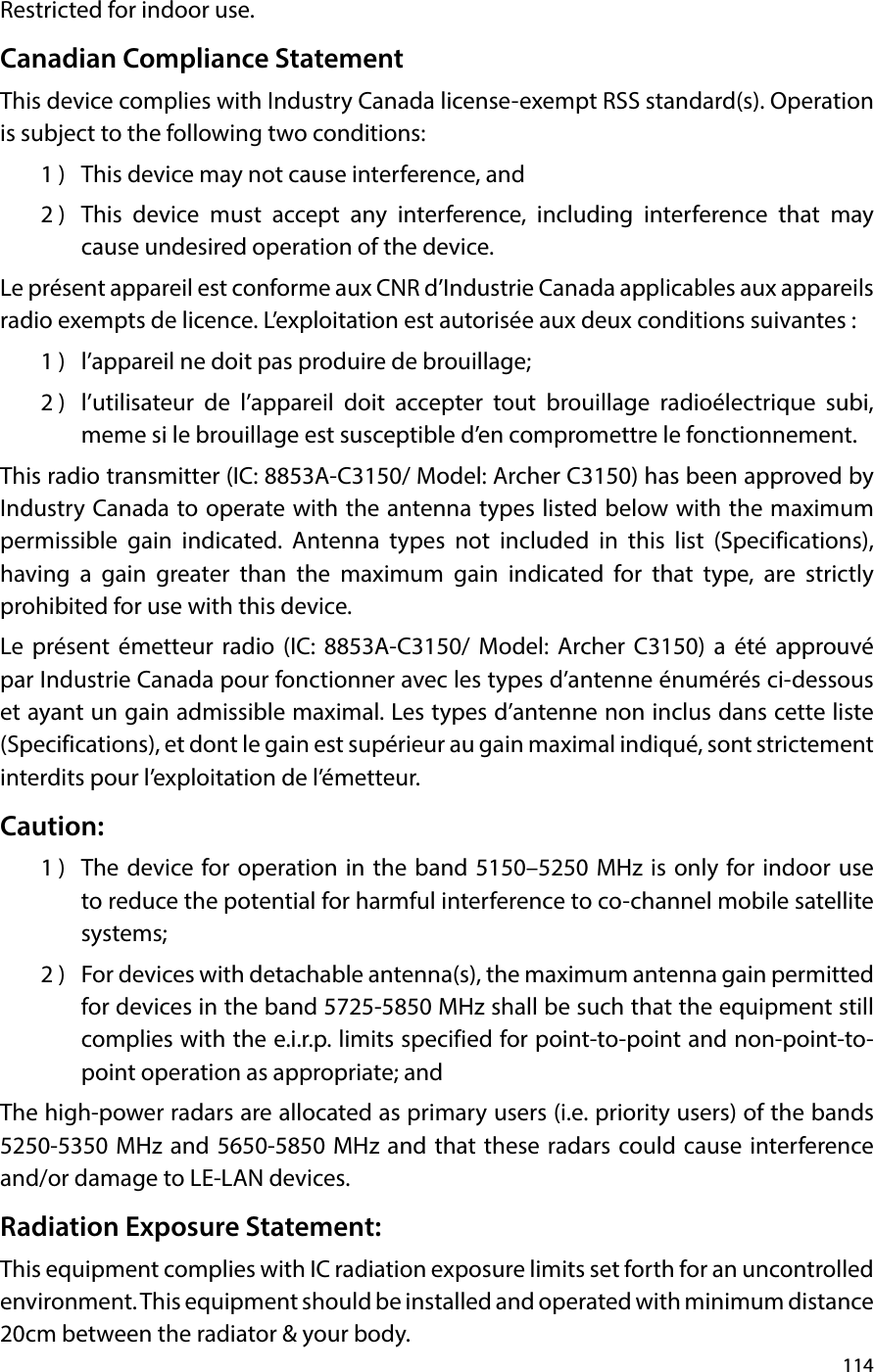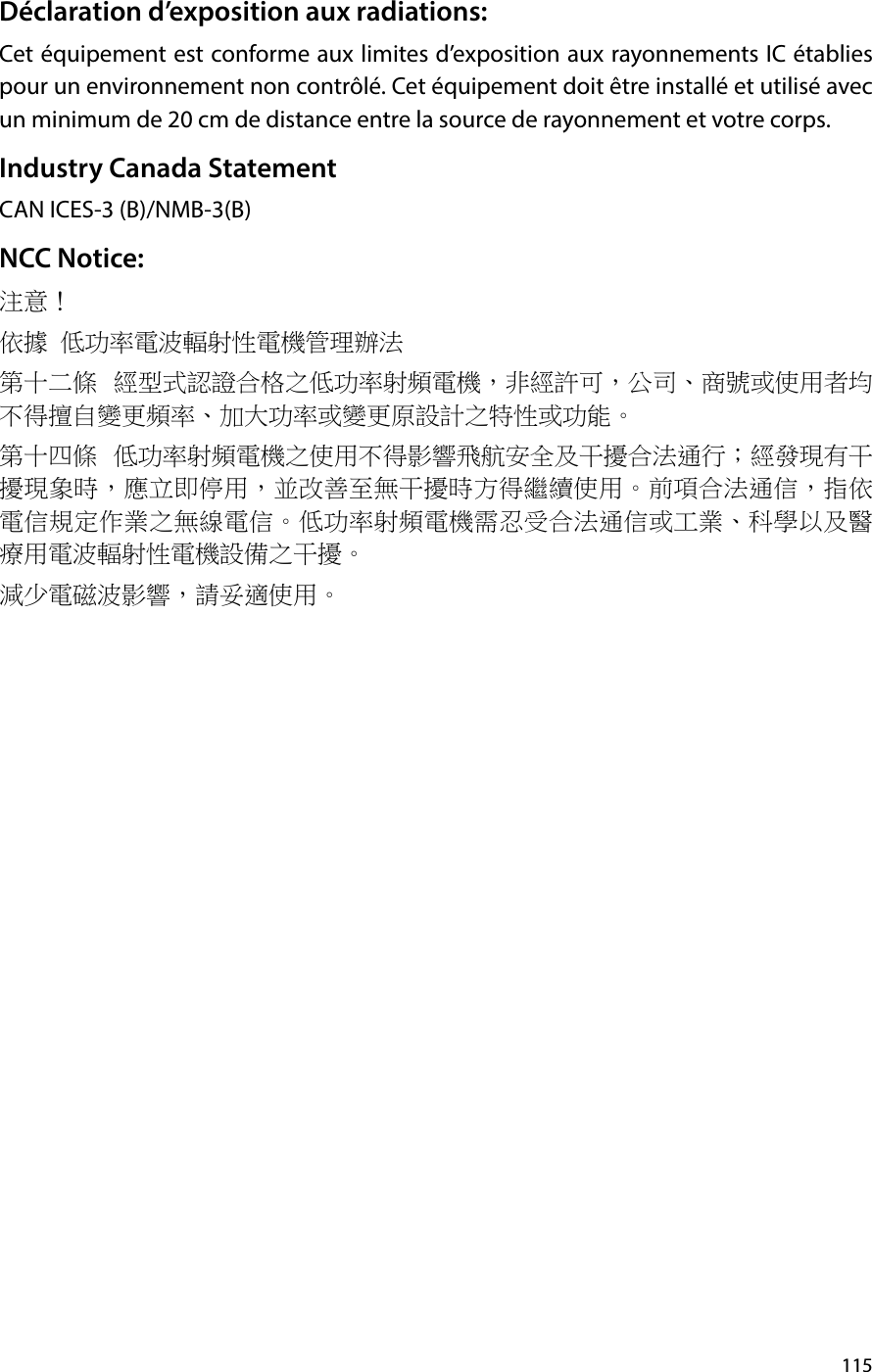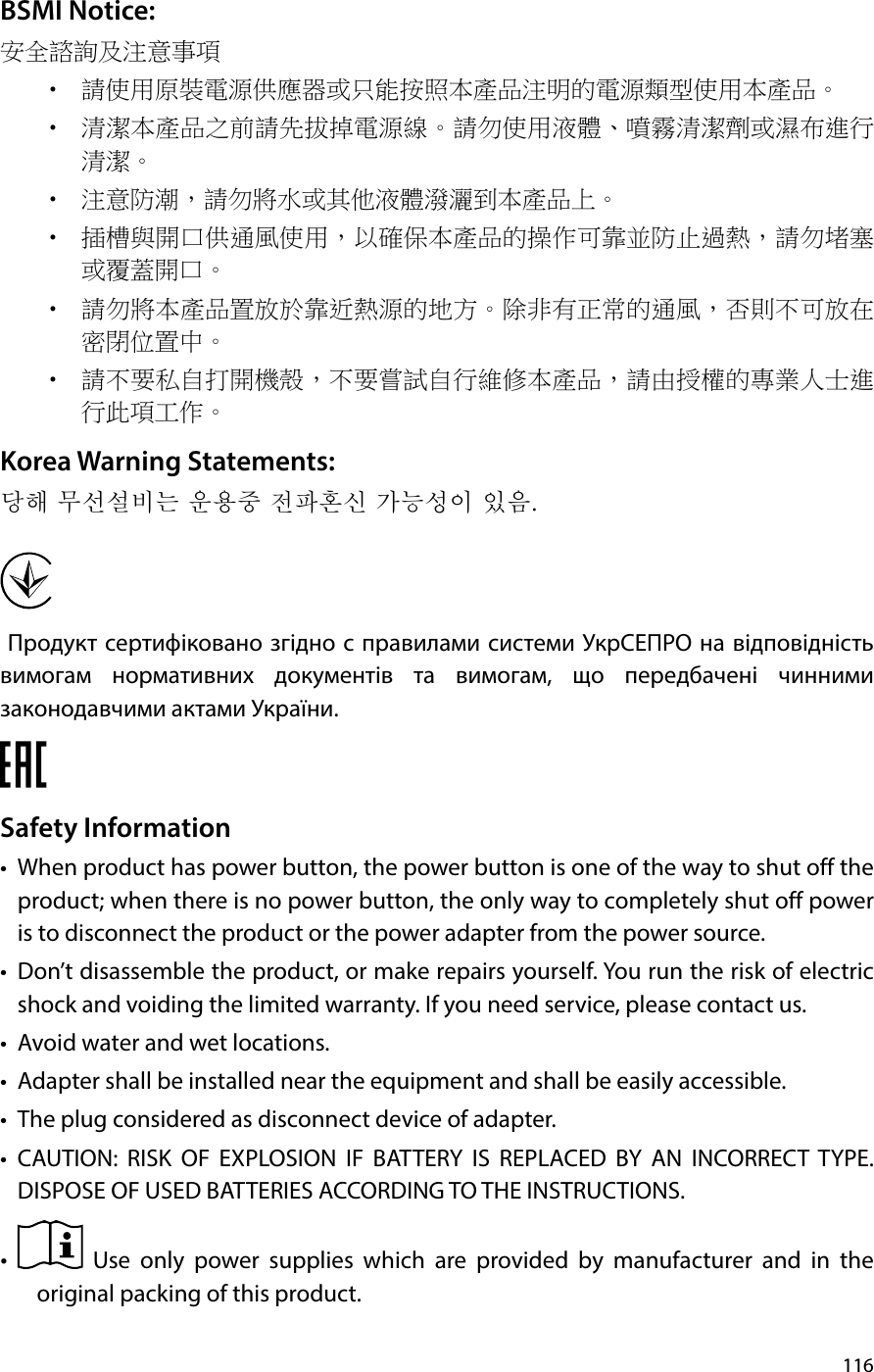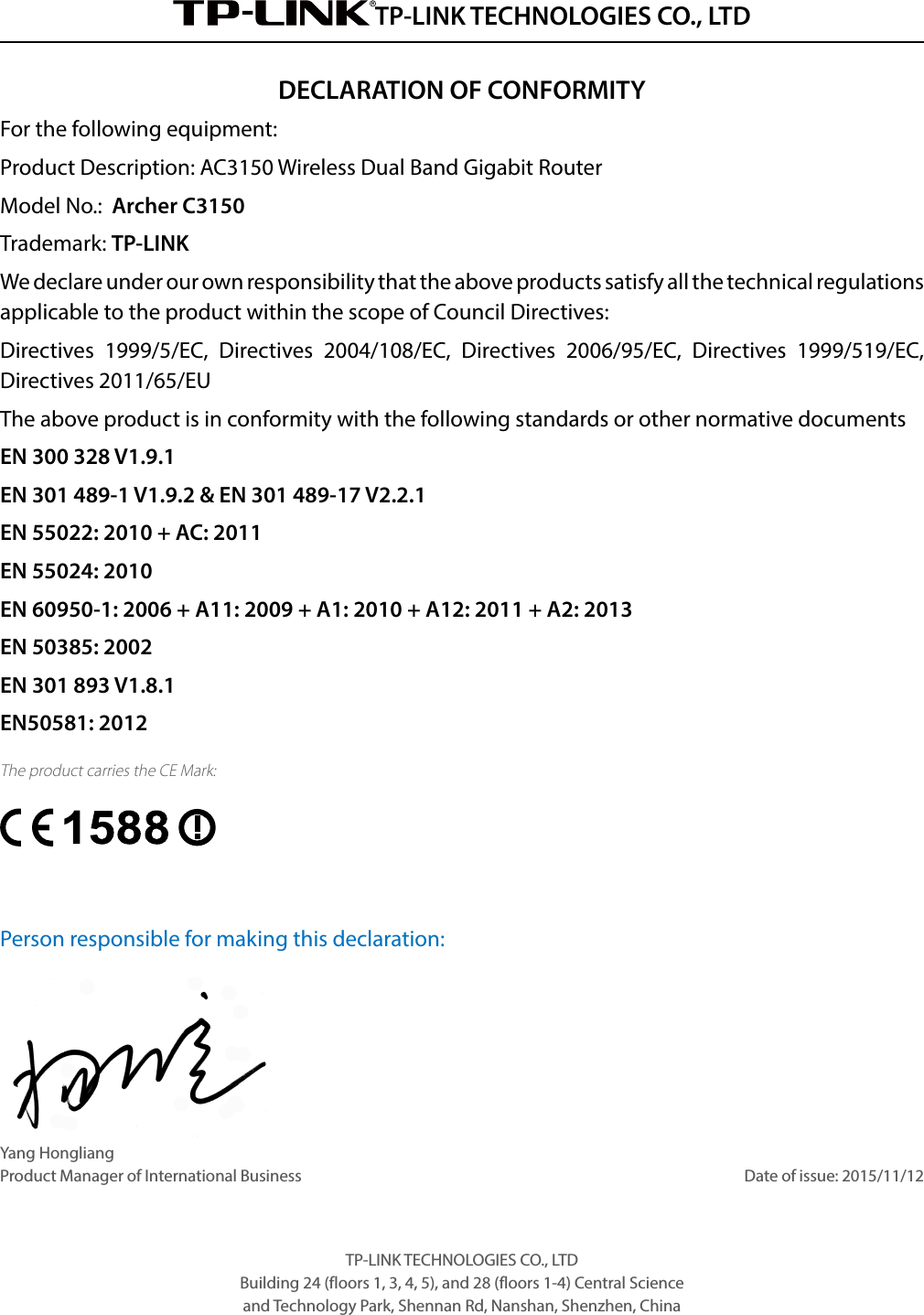TP Link Technologies C3150 AC3150 Wireless MU-MIMO Gigabit Router User Manual Part 3
TP-Link Technologies Co., Ltd. AC3150 Wireless MU-MIMO Gigabit Router Users Manual Part 3
Contents
- 1. Users Manual Part 1
- 2. Users Manual Part 2
- 3. Users Manual Part 3
Users Manual Part 3
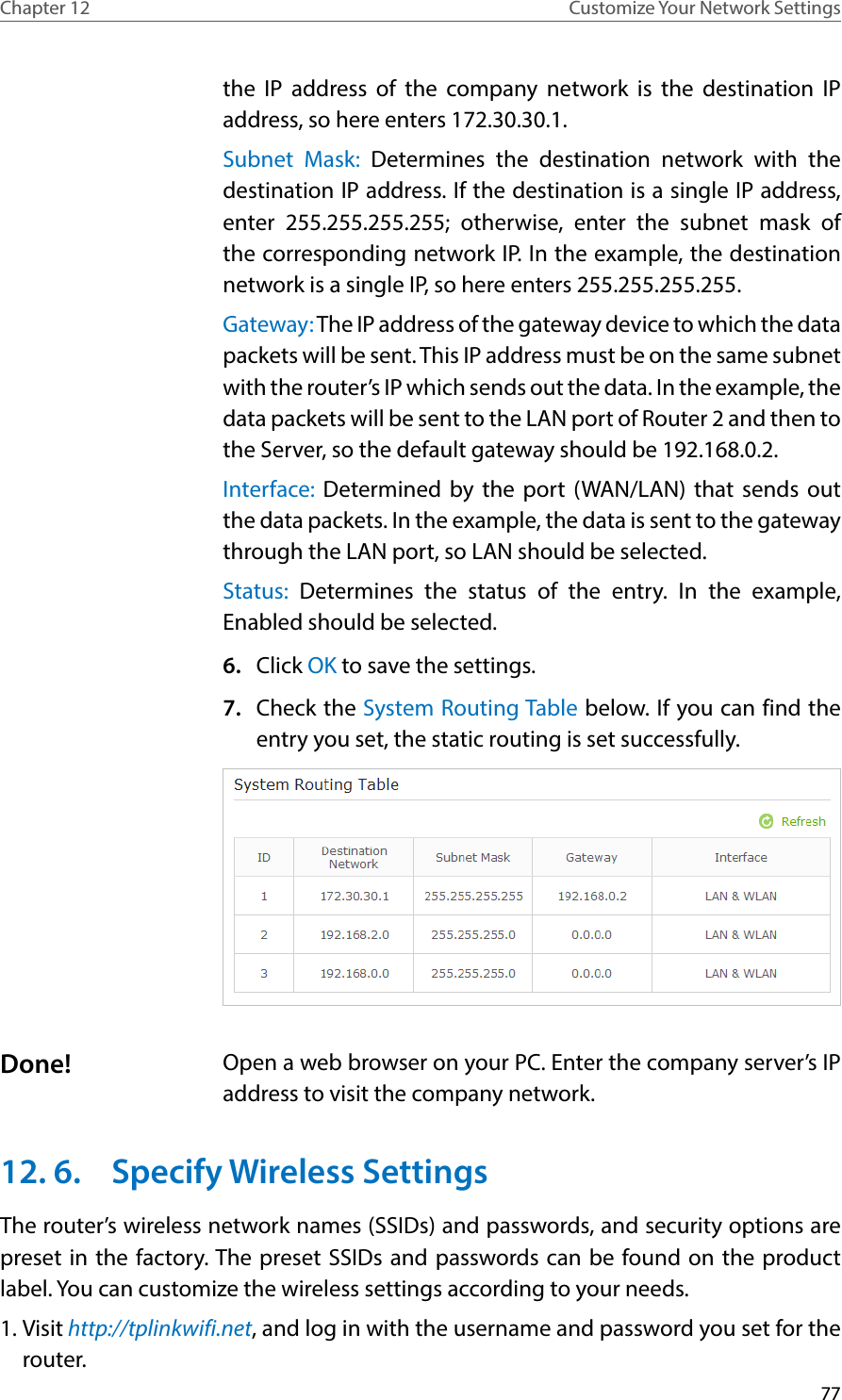
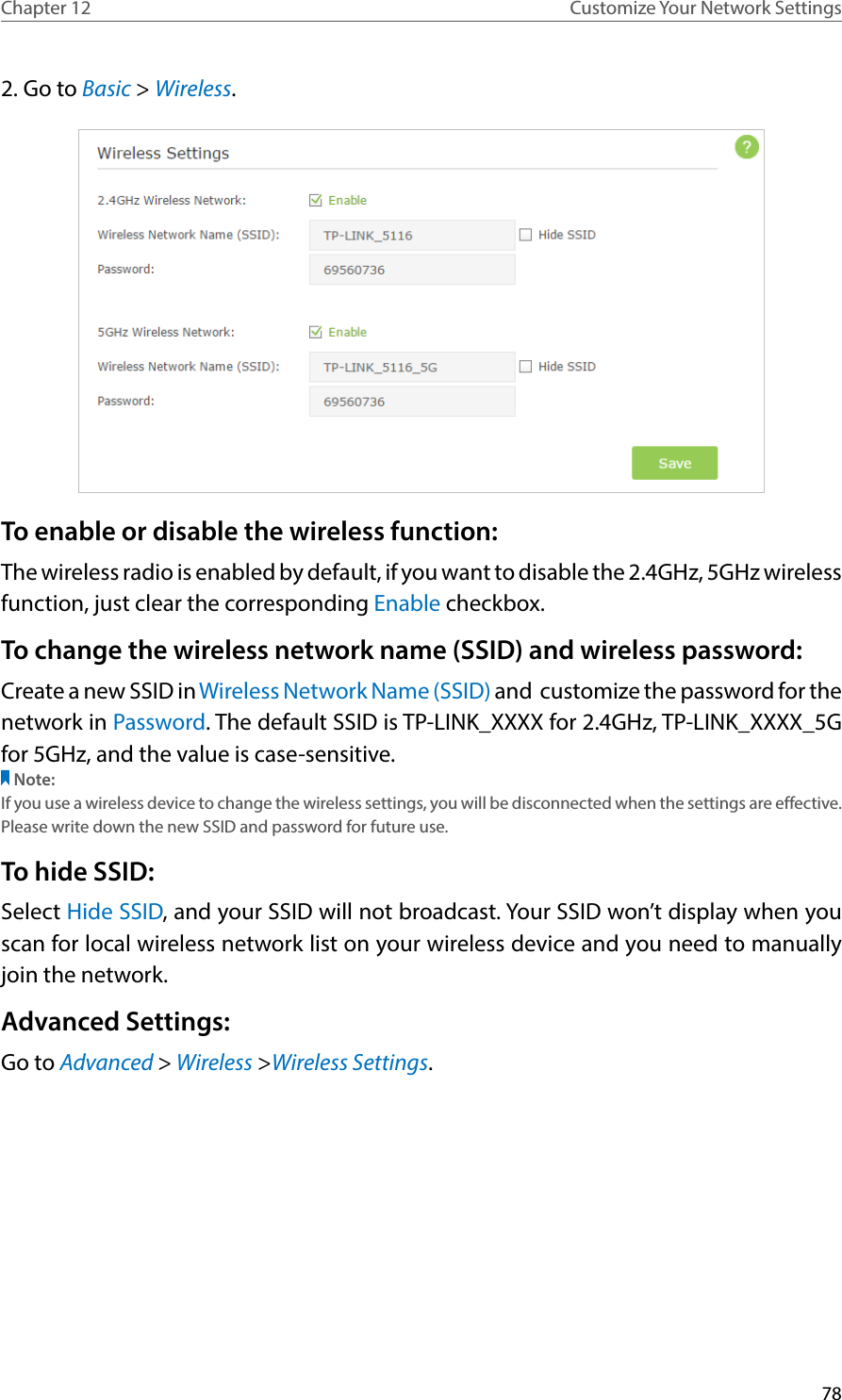
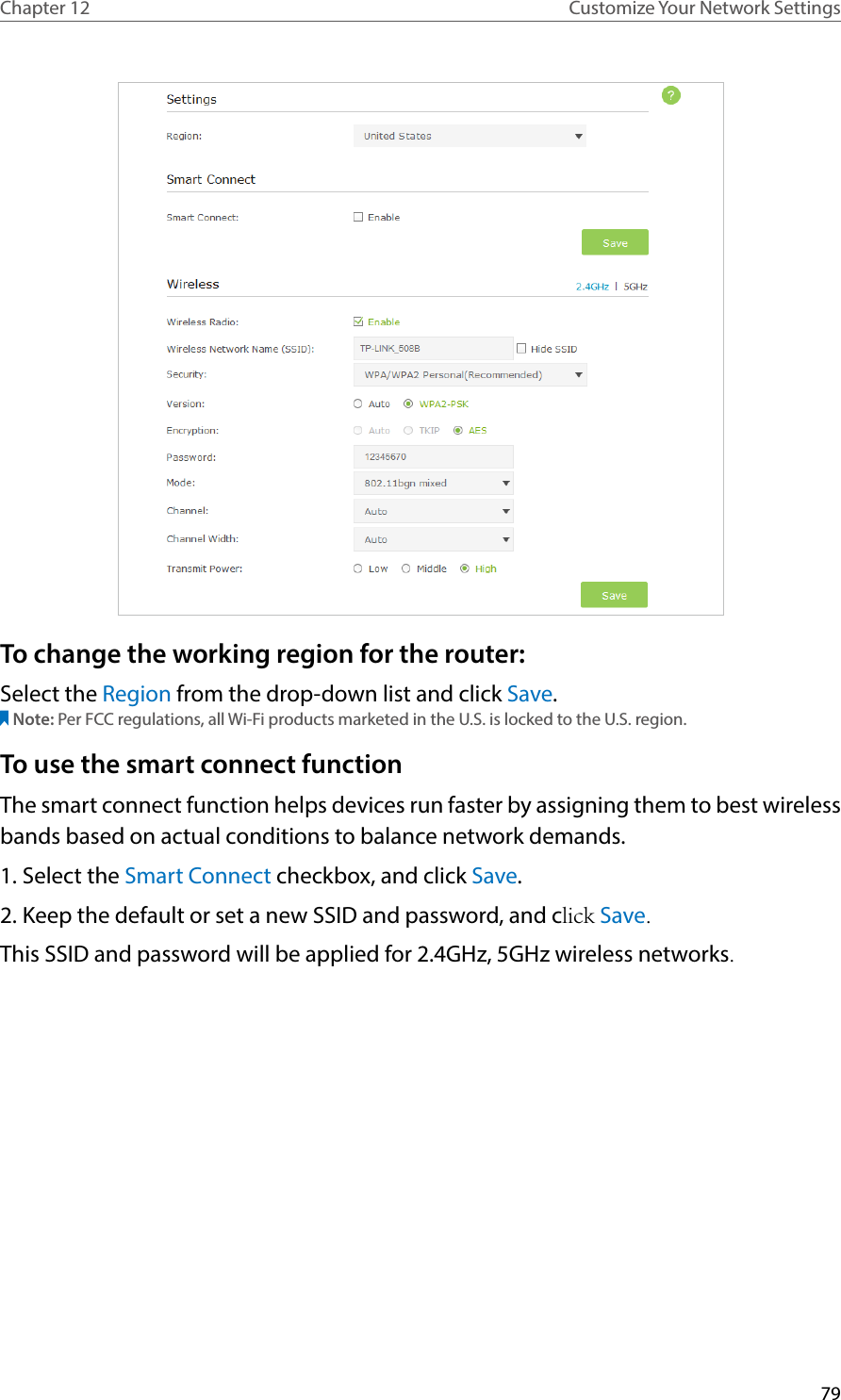
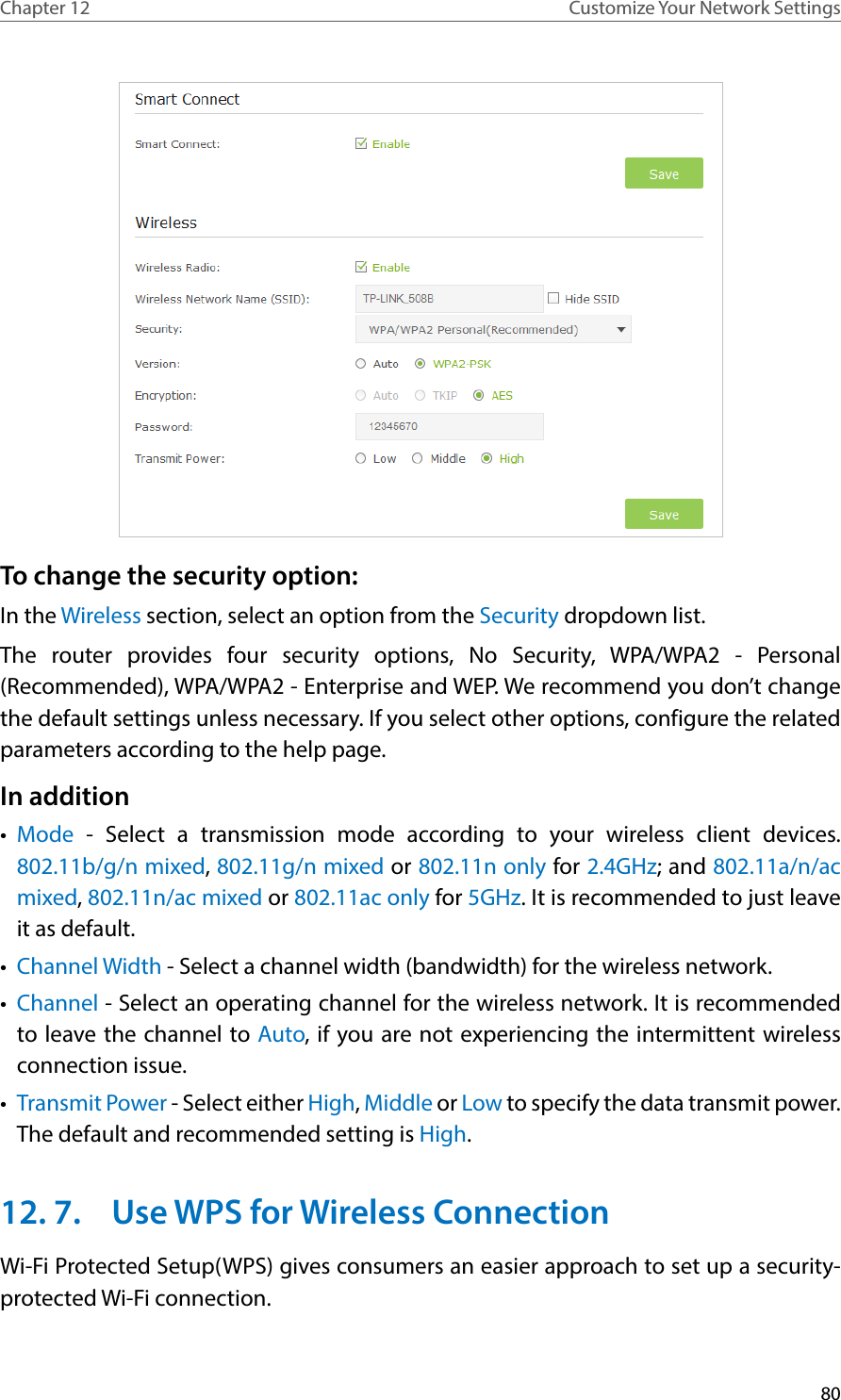
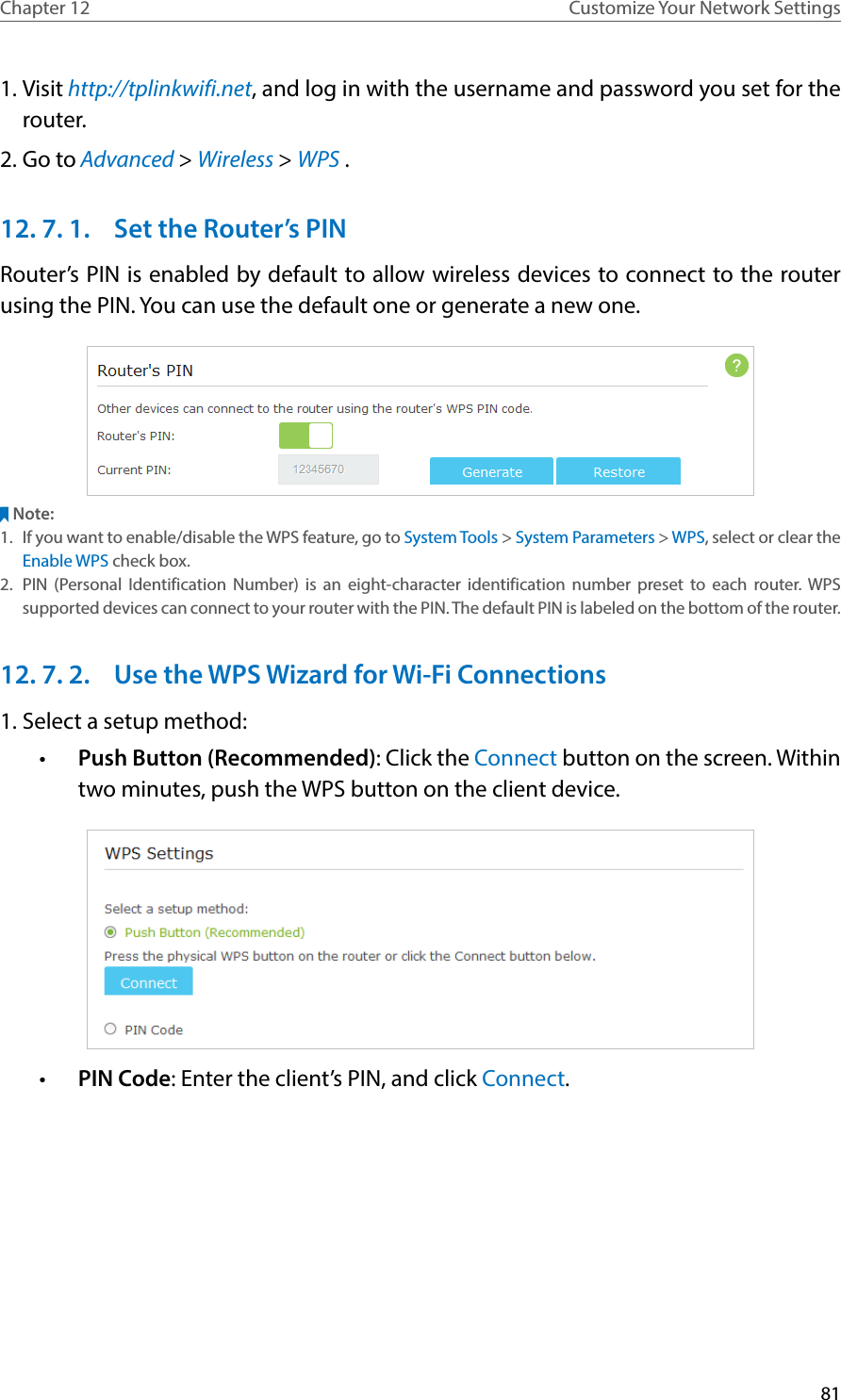
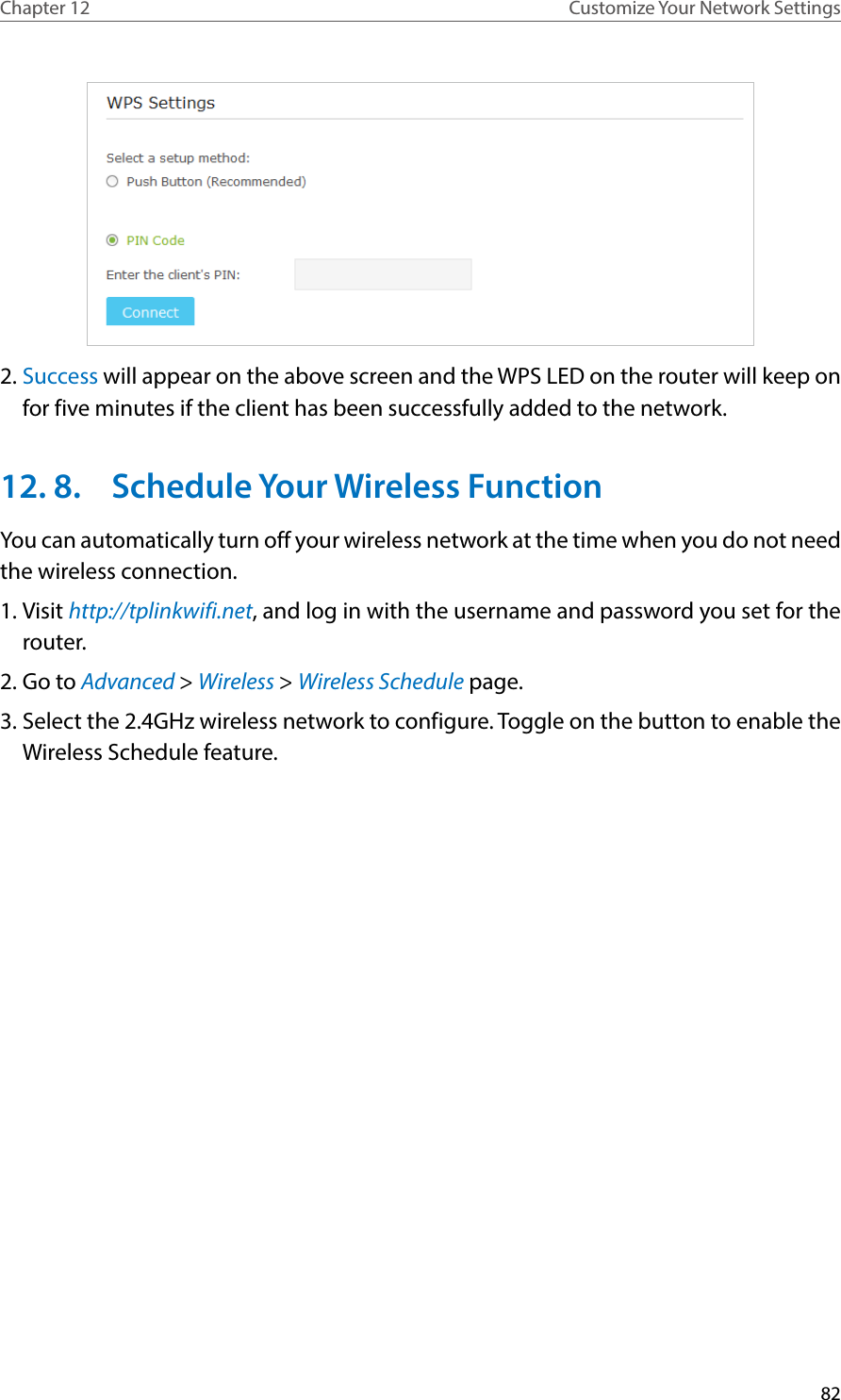
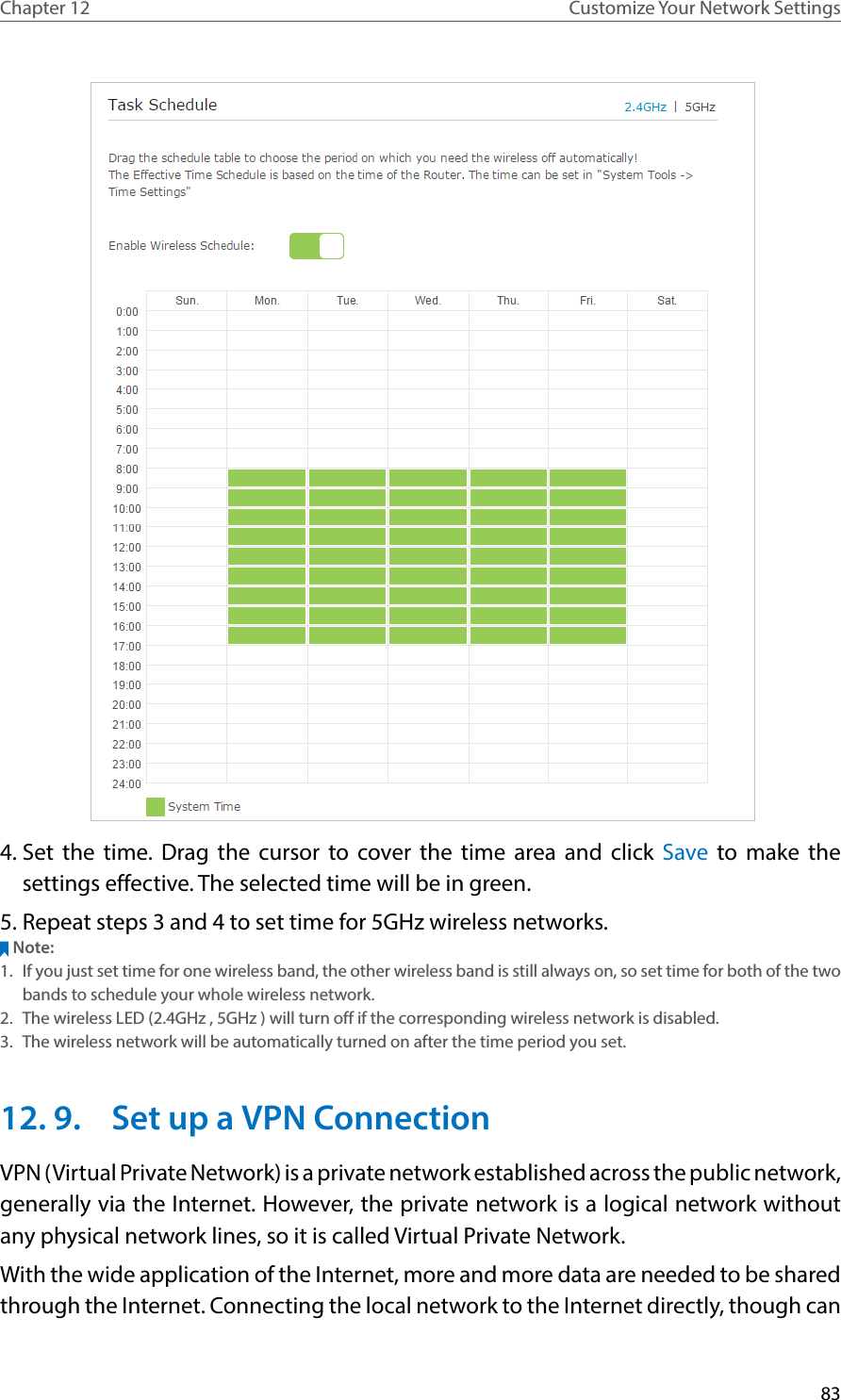
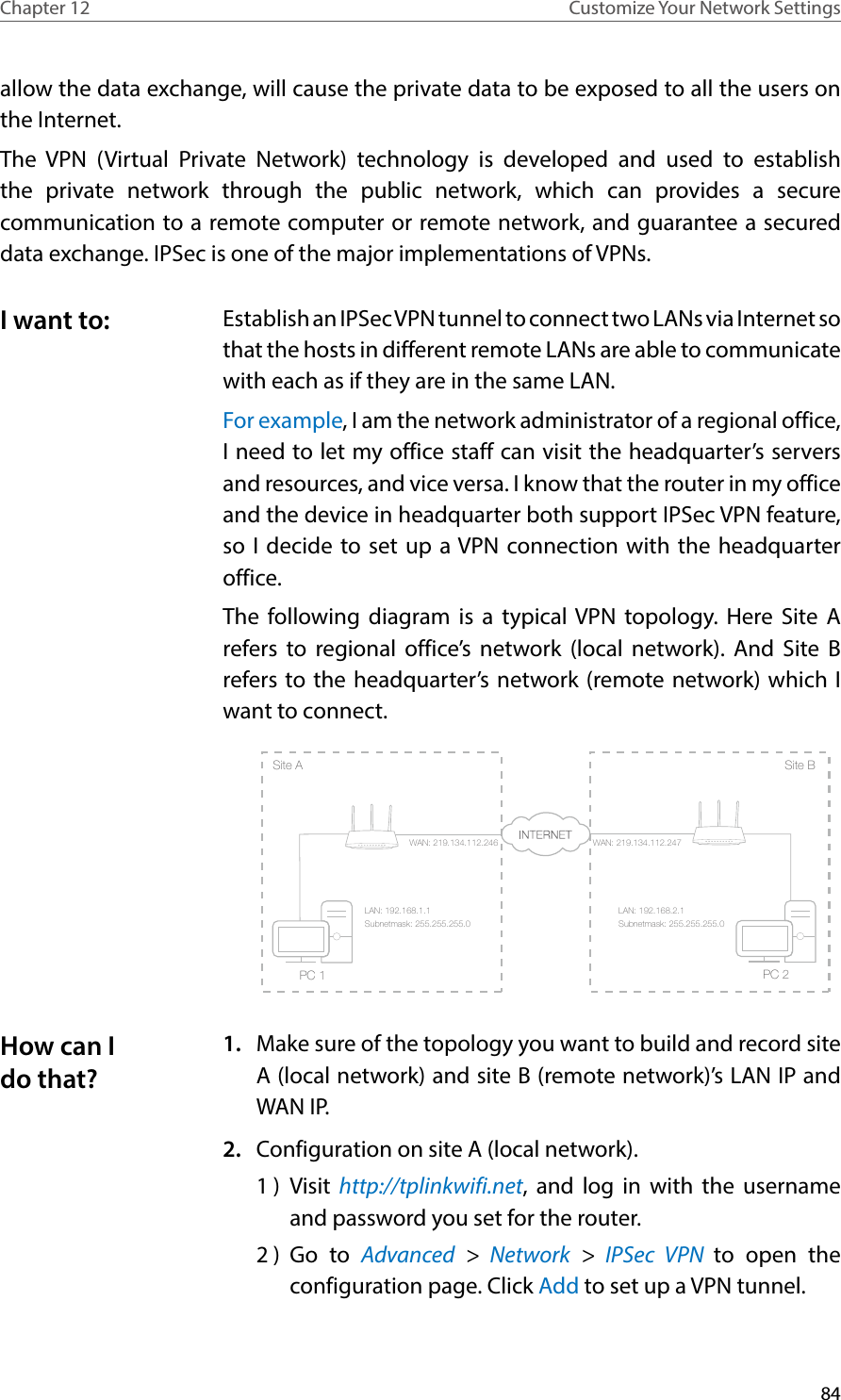
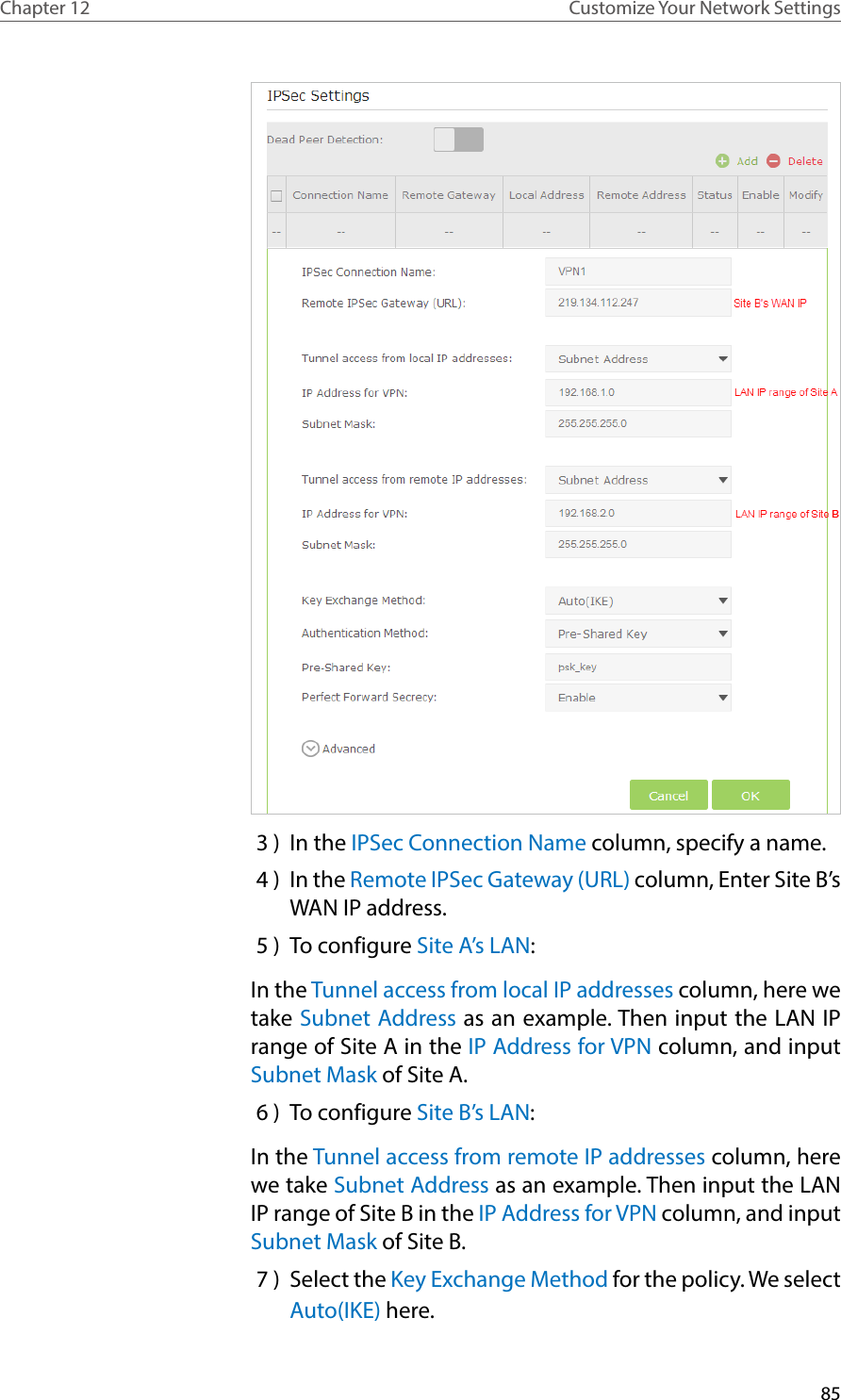
![86Chapter 12 Customize Your Network Settings8 ) Enter the Pre-Shared Key for IKE authentication. Then keep Perfect Forward Secrecy enabled.Note: • The key should consist of visible characters without blank space.• Make sure Site A and Site B use the same key.9 ) Leave the Advanced Settings as default value. Then click OK to save.3. Configuration on Site B (remote network). Refer to step 2 configuration on Site A and make sure that Site A and Site B use the same Pre-shared keys and Perfect Forward Secrecy settings.4. The Status column will change to UP if the VPN connection has been set up successfully.5. Check the VPN connection. You can ping site B’ LAN IP from your computer in site A to verify that the IPSec VPN connection is set up correctly.Tips: To check the VPN connection, you can do the following.a . On the host in Site A, press [Windows Logo] + [R] to open Run dialog. Input “cmd” and hit OK.b . In the CLI window, type in “ping 192.168.2.x” (“192.168.2.x” can be IP address of any host in Site B). Then press [Enter].](https://usermanual.wiki/TP-Link-Technologies/C3150.Users-Manual-Part-3/User-Guide-2816664-Page-10.png)
